ACROSS LADAKH ON A ROYAL ENFIELD
1,200 km on a motorcycle in India, on the roof of the world
Continuation of the adventure “The Karakoram Highway by bike.
The plan is simple: rent motorcycles, cross the world’s highest pass at 5359 m, stop off at Buddhist monasteries en route and avoid falling into the vertiginous ravines that line Ladakh’s sublime trails.
After 5 weeks alone on the roads in Kyrgyzstan, China and Pakistan , where I cycled the entire Karakoram Highway, I crossed the border into India on July 15, 2017 to meet up with Nicolas, my friend with whom I toured the world in a 4L to promote microfinance. This is the first time we’ve set off on an adventure together since our return in August 2014.
In Manali, in northern India, I swap my bike for a Royal Enfield Classic 500cc motorcycle and we set off to conquer Ladakh, destination Leh. Literally, Ladakh means “land of high passes”, and we quickly understand why: the road from Manali to Leh has three passes at over 5000 m altitude. A Royal Enfield expedition into the remote mountains of Little Tibet.
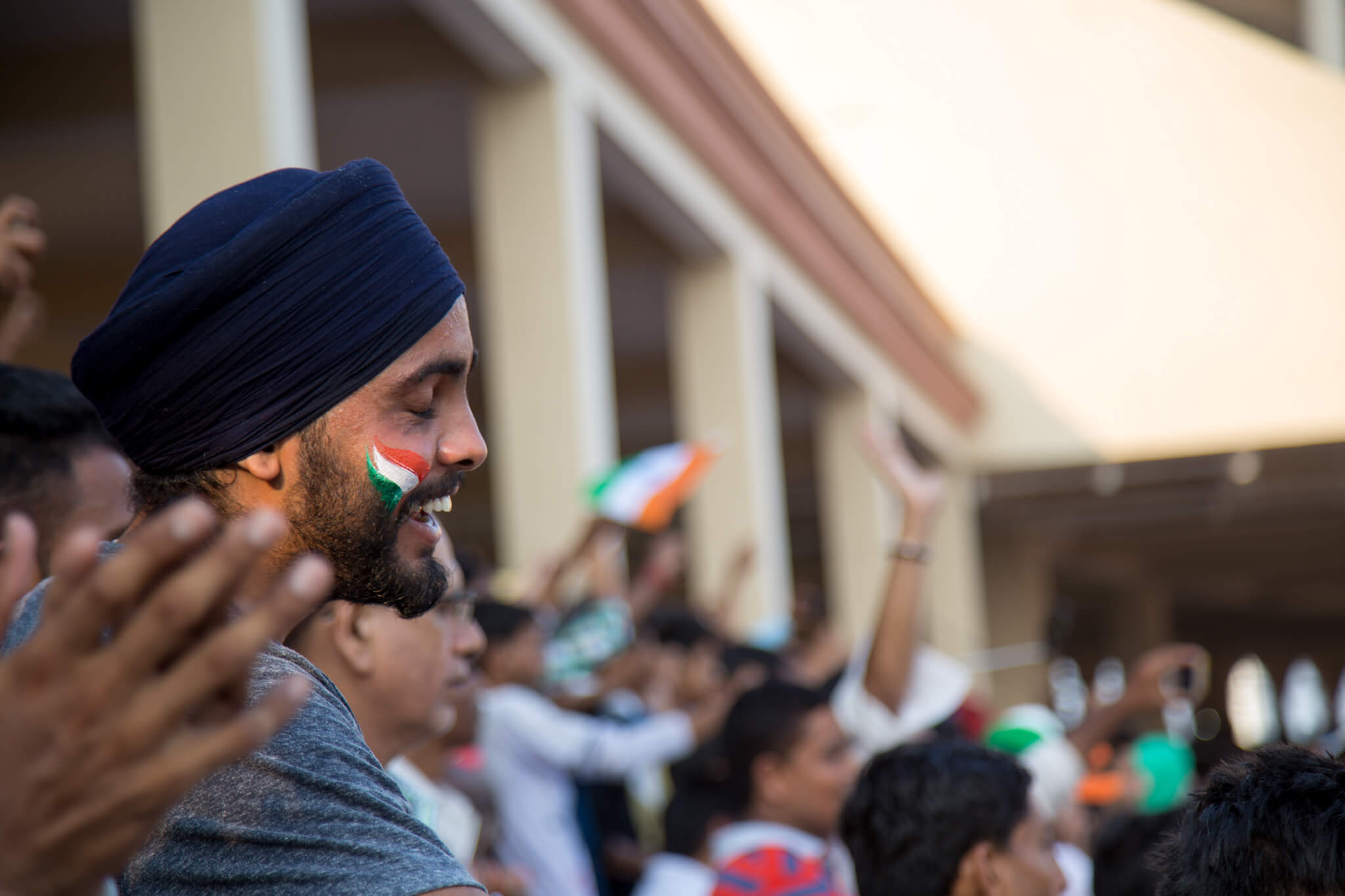
At the Wagah border crossing between Pakistan and India, a border closing ceremony takes place every evening. Many Indian tourists come from all over the region to attend this highly patriotic event.
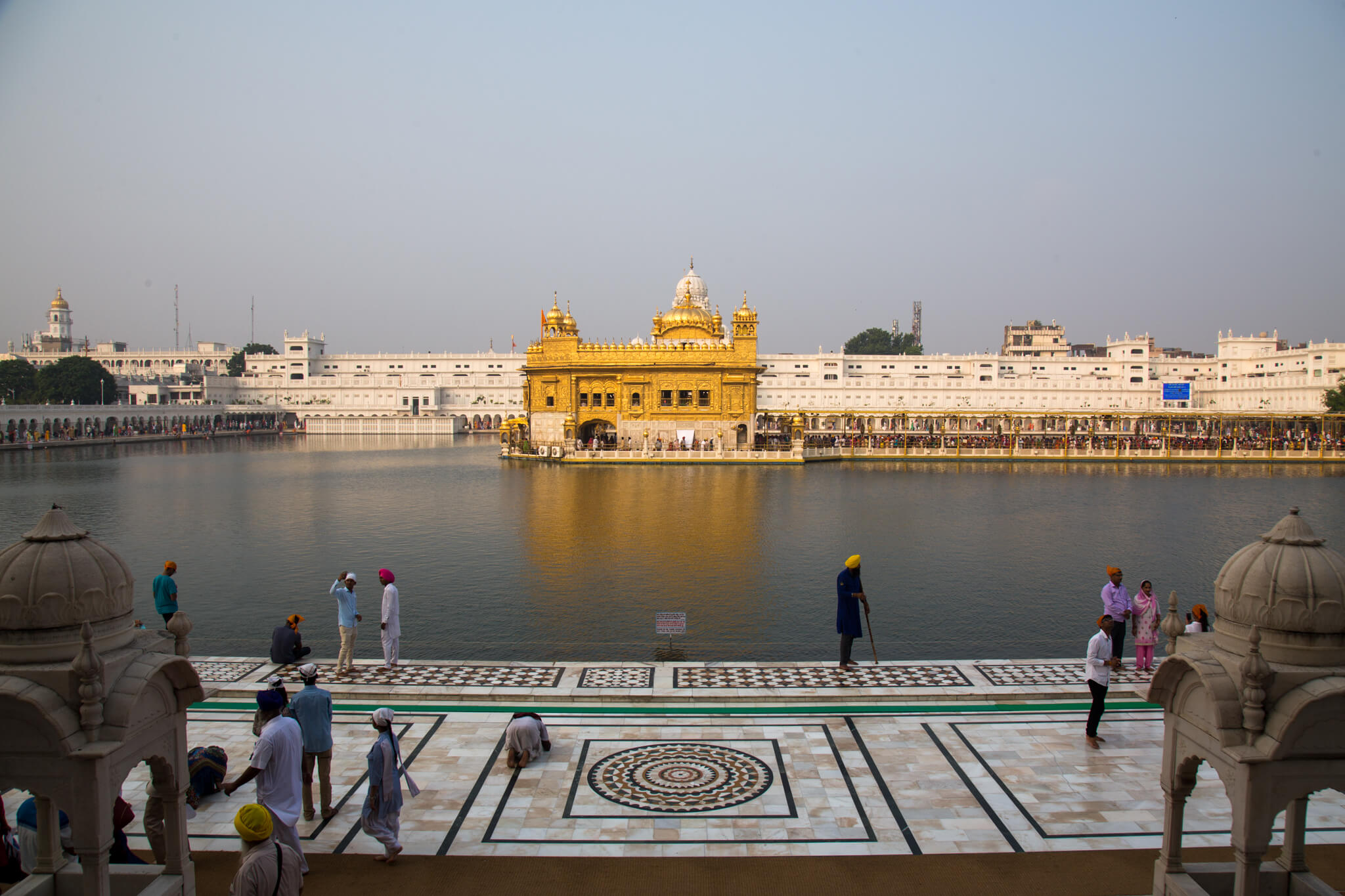
Some 30 km east of Wagah lies the city of Amritsar. In the center of the city, in the middle of a 150 m square basin, stands the mesmerizing Golden Temple. Covered in a thin layer of gold, it is the Sikhs’ most sacred building. I go there at sunrise to watch the pilgrims and disciples.
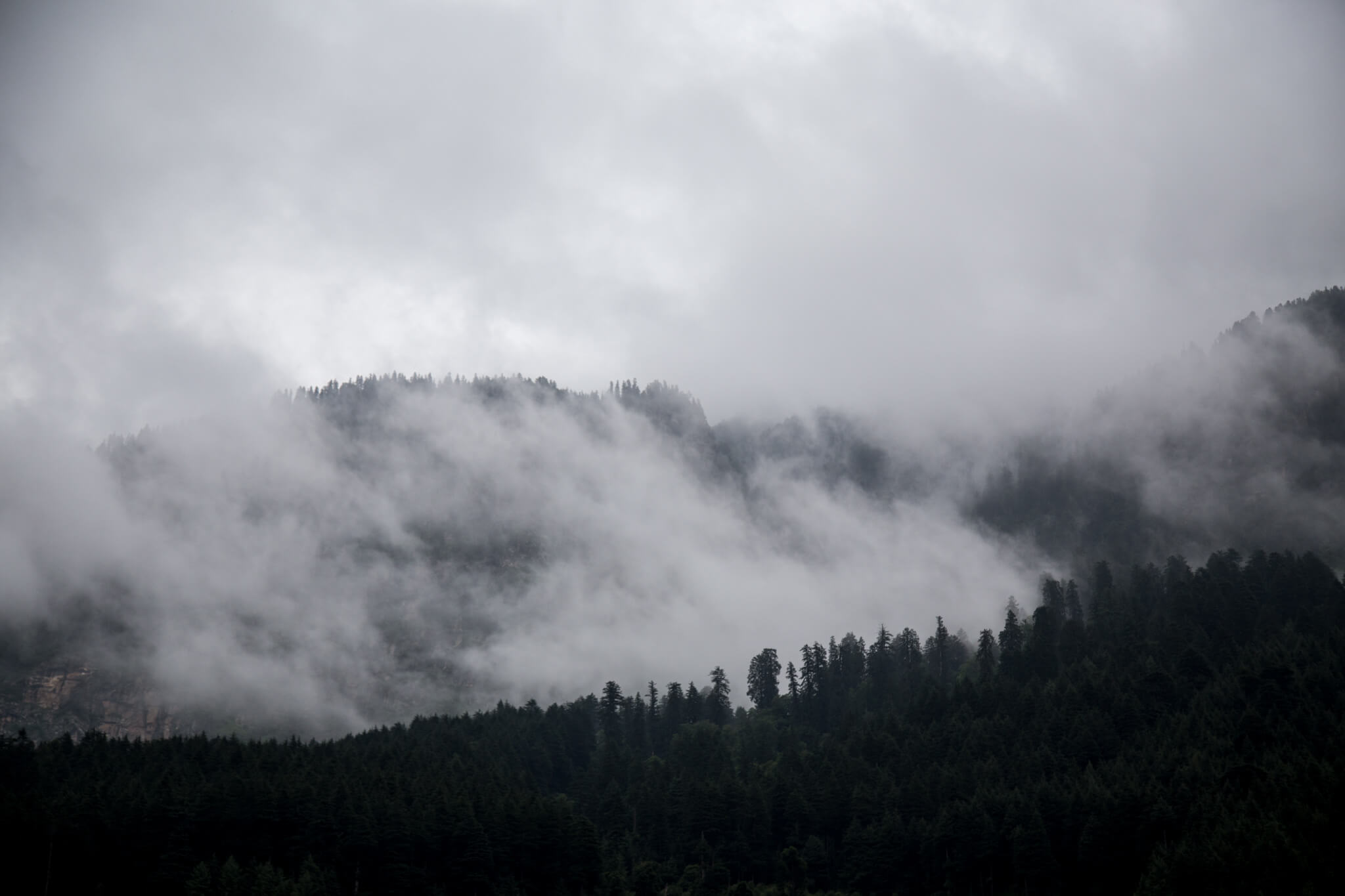
I meet up with Nicolas in Manali, in the northern Indian state of Himachal Pradesh. At an altitude of 1,800 m, the temperature is quite cool, which is not bad after the sweltering heat of Amritsar. Nicolas arrives straight from Paris via New Delhi. We meet at a hotel reception after spending the night in late-night buses.
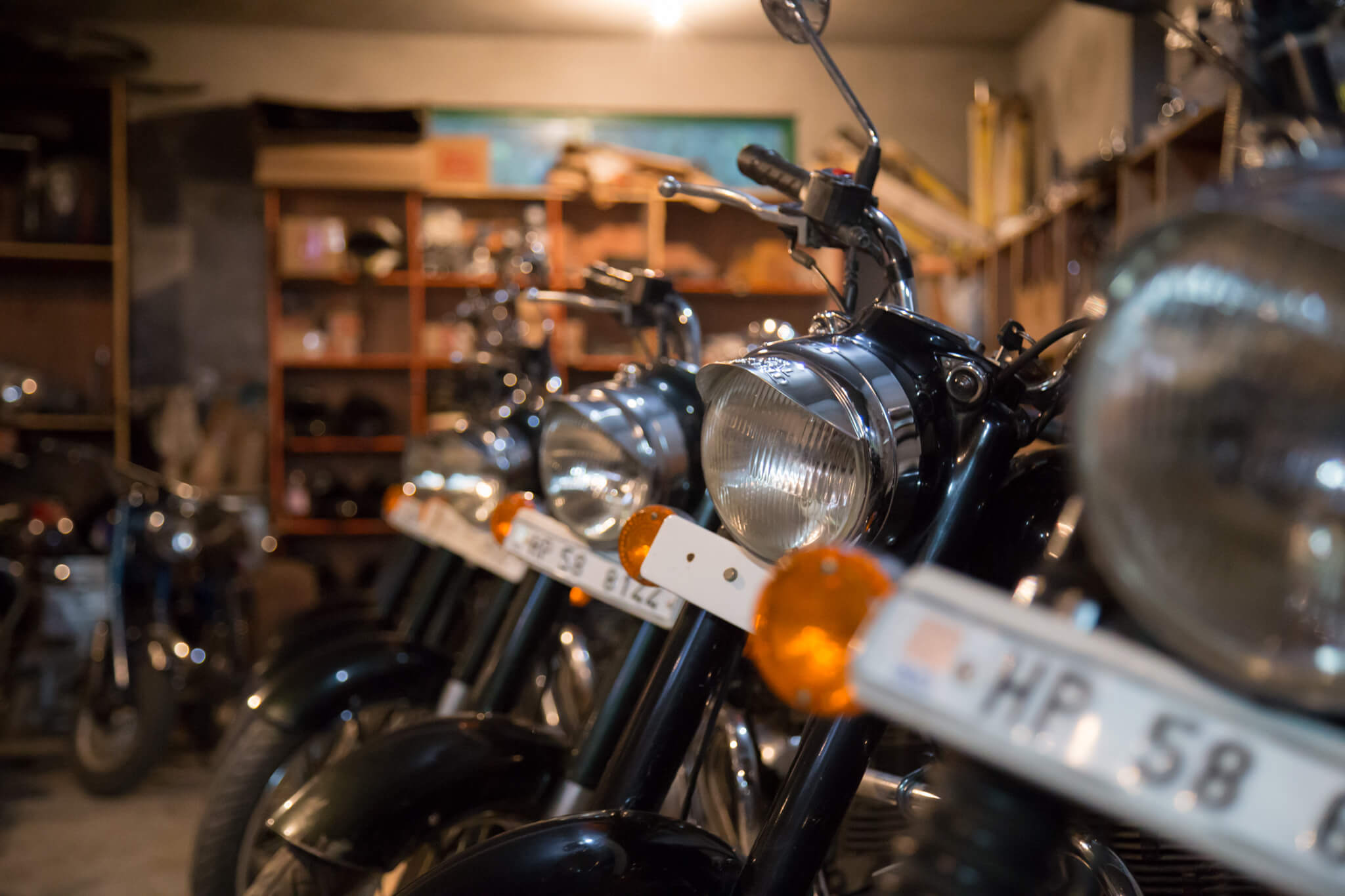
There’s nothing like traveling through Ladakh on a legendary Royal Enfield! We rent two of them. They’re heavy but powerful (500cc) and adapted to the terrain we’re about to encounter.
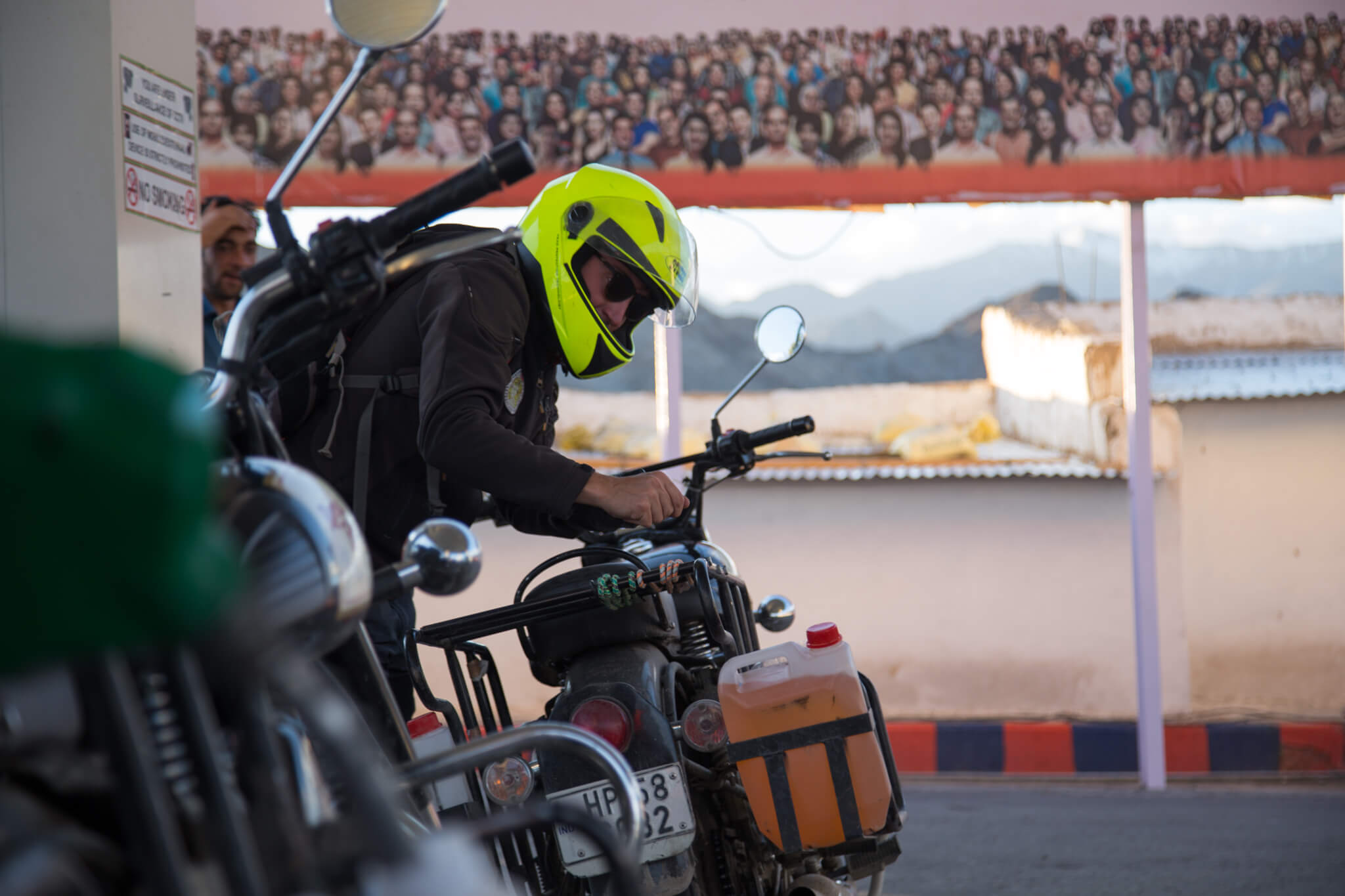
On the road, there are no service stations and very little infrastructure. We set off with two 5L jerry cans of petrol each.
“What drives a young man of ordinary constitution and classical education to sit down one day at the handlebars of a motorcycle and never again desire anything other than to swallow up the kilometers, torso motionless, gaze lost, throttle depressed – all the way, towards the horizon?”
-Sylvain Tesson
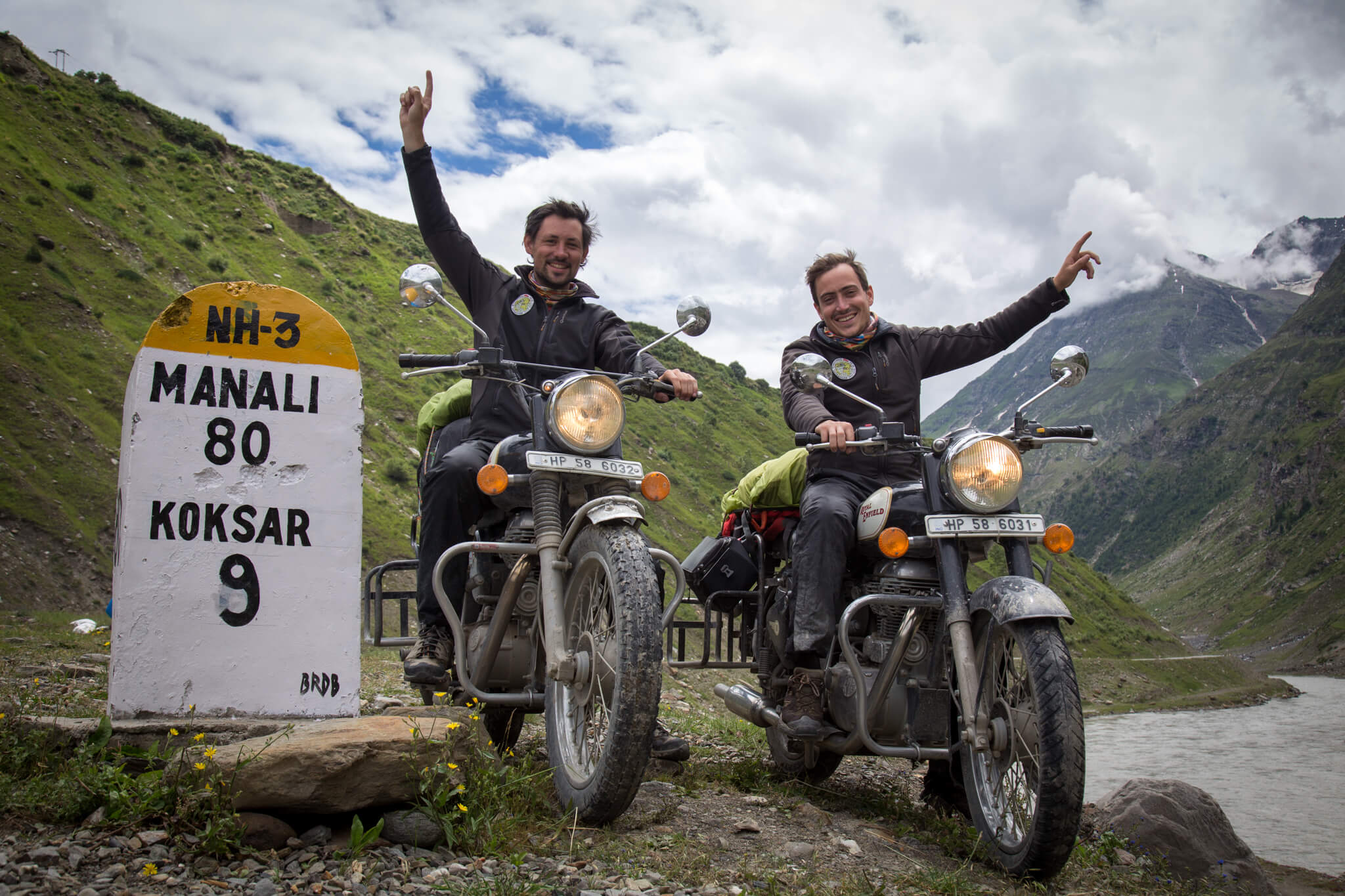
With our bags firmly strapped to the back of our bikes, we travel light, without tents or stoves. For this adventure, we sleep in small guesthouses and eat in small roadside restaurants.
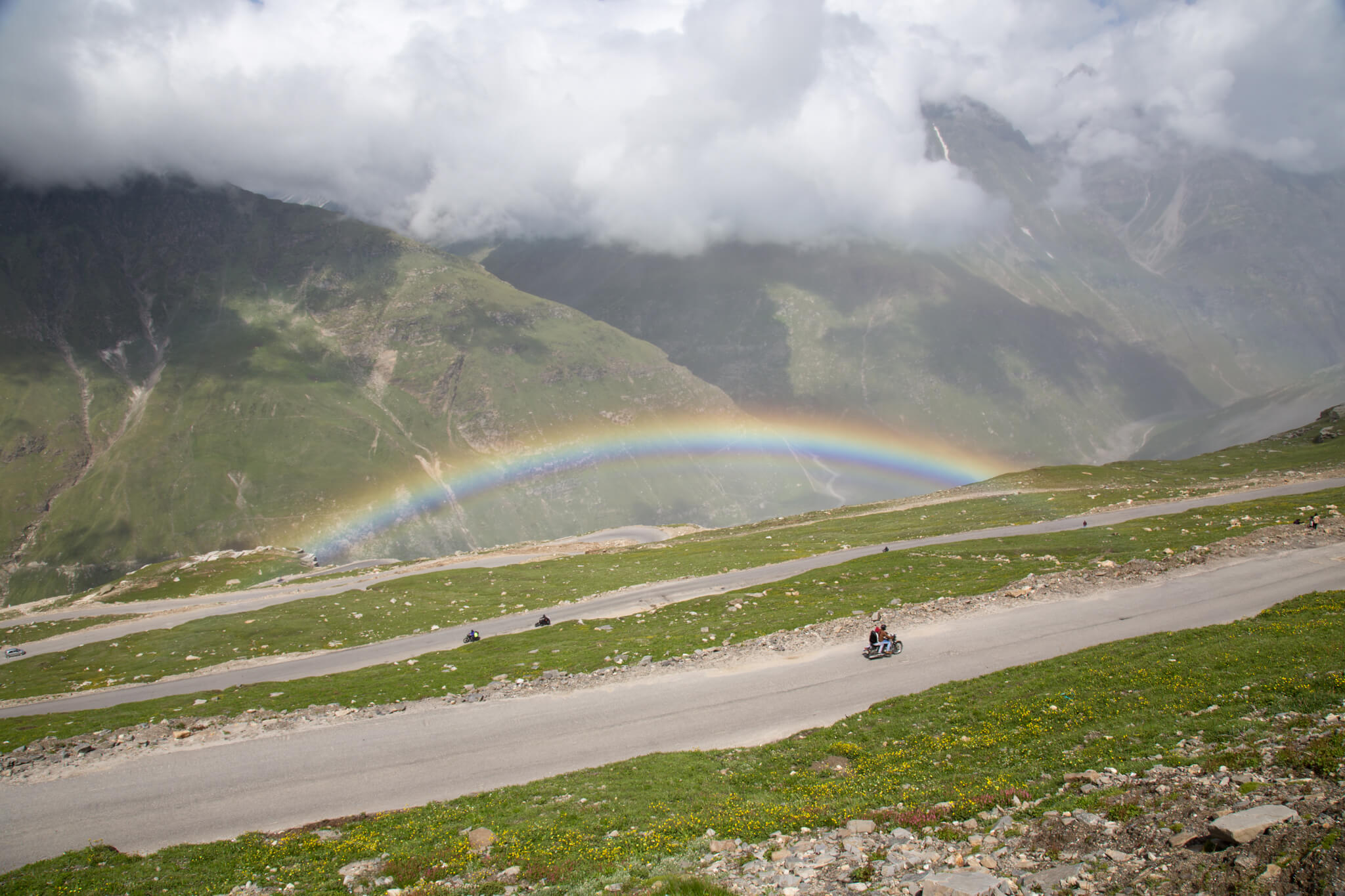
Rohtang Pass (3978 m). Not particularly high compared to other Himalayan passes, but difficult to cross due to uncertain weather conditions. We cross it in pouring rain and dense fog. At the summit, the clouds open up to reveal a large sun whose rays produce a rainbow.
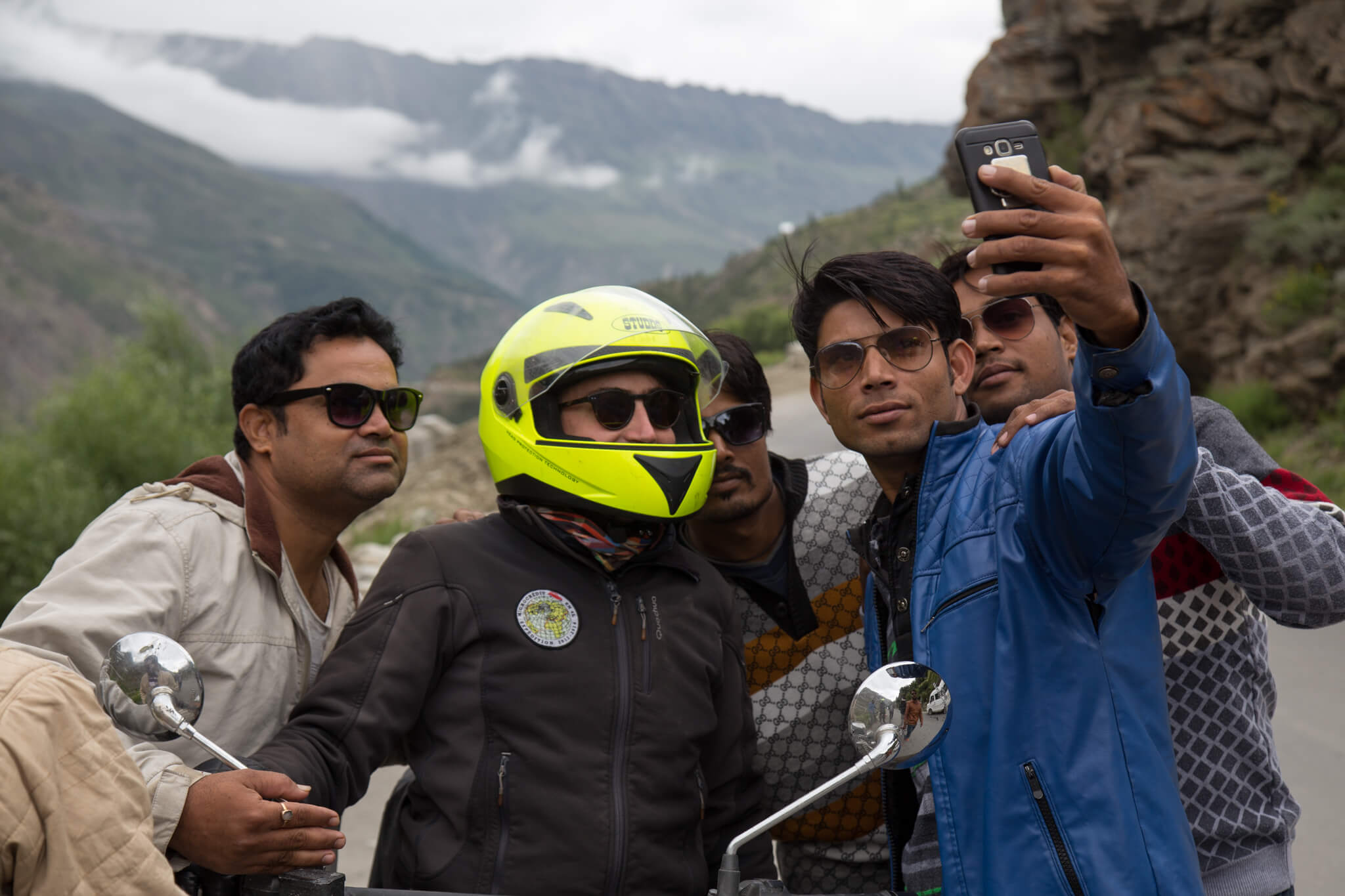
We’re not alone on the road. Many Indian tourists are making the same journey as us. Some in cars, others on motorcycles. We pass many groups, curious to make our acquaintance.
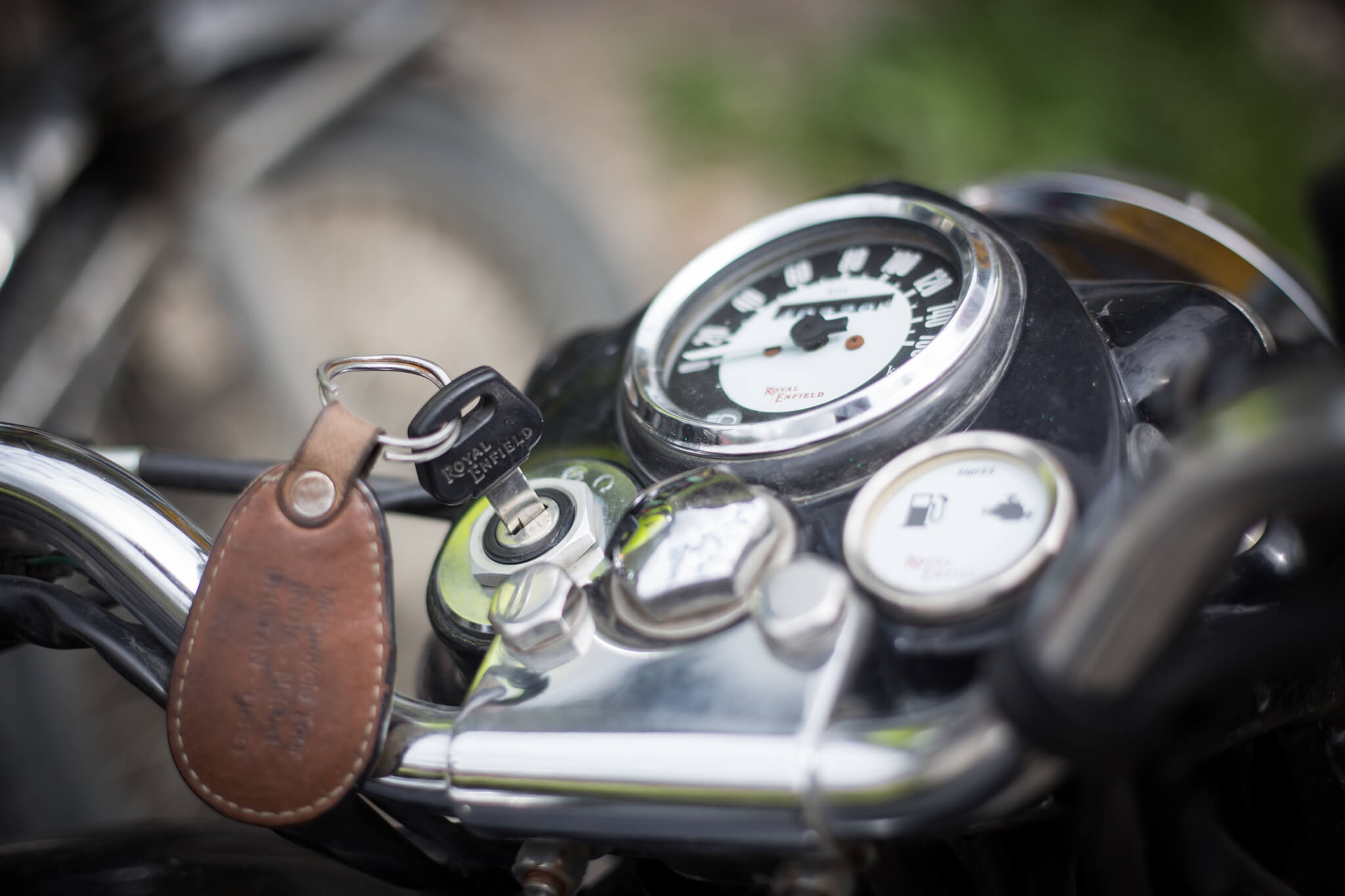
It takes a few hours to get used to our new bikes and to driving on the left. I’ve never driven anything over 150cc, but it doesn’t take long.
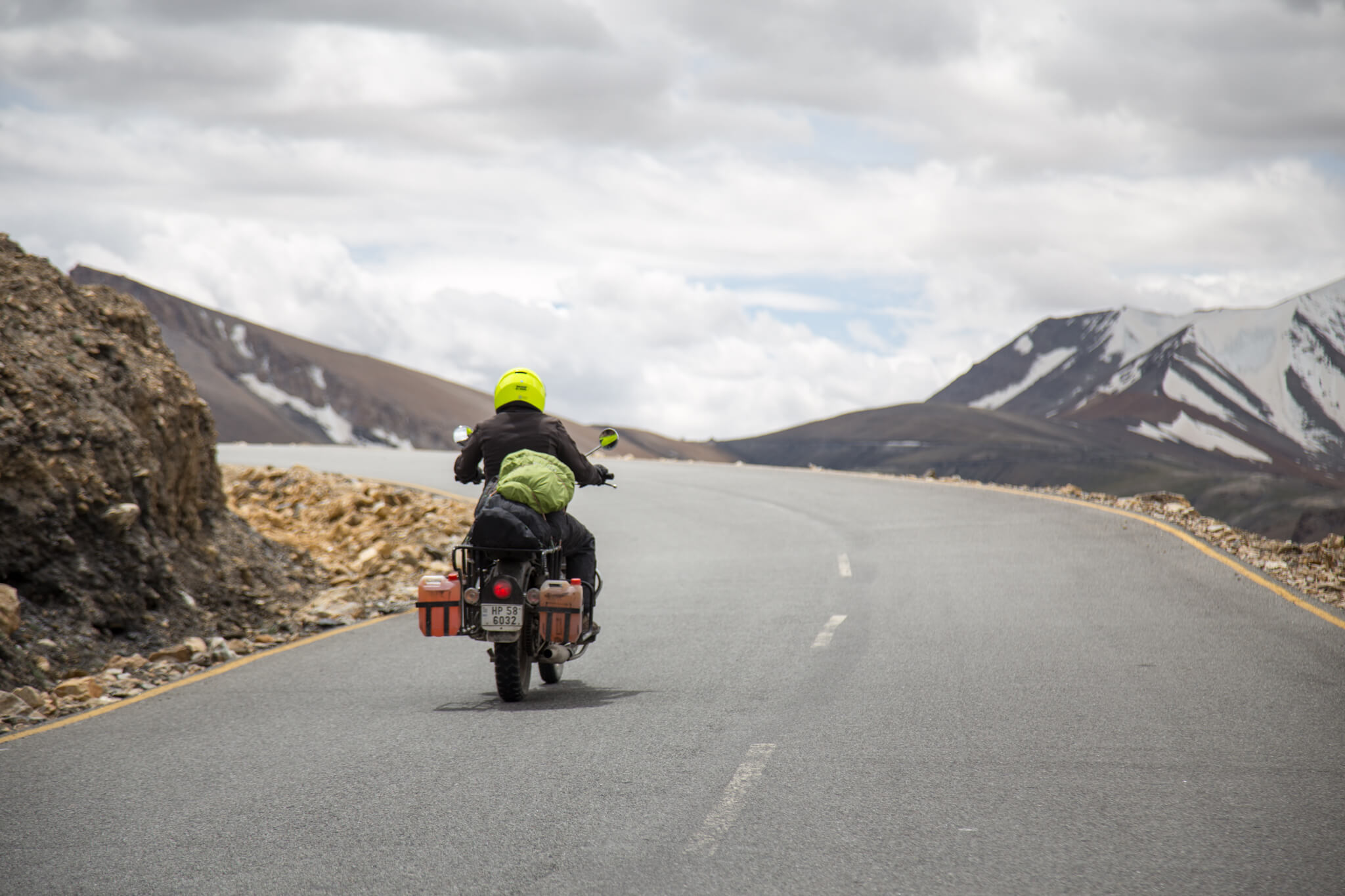
When the roads are paved, we make comfortable progress behind the handlebars of our Royal Enfields. Travelling by motorcycle gives you a unique feeling of freedom. With our right wrist on the throttle, the landscape passes effortlessly by.
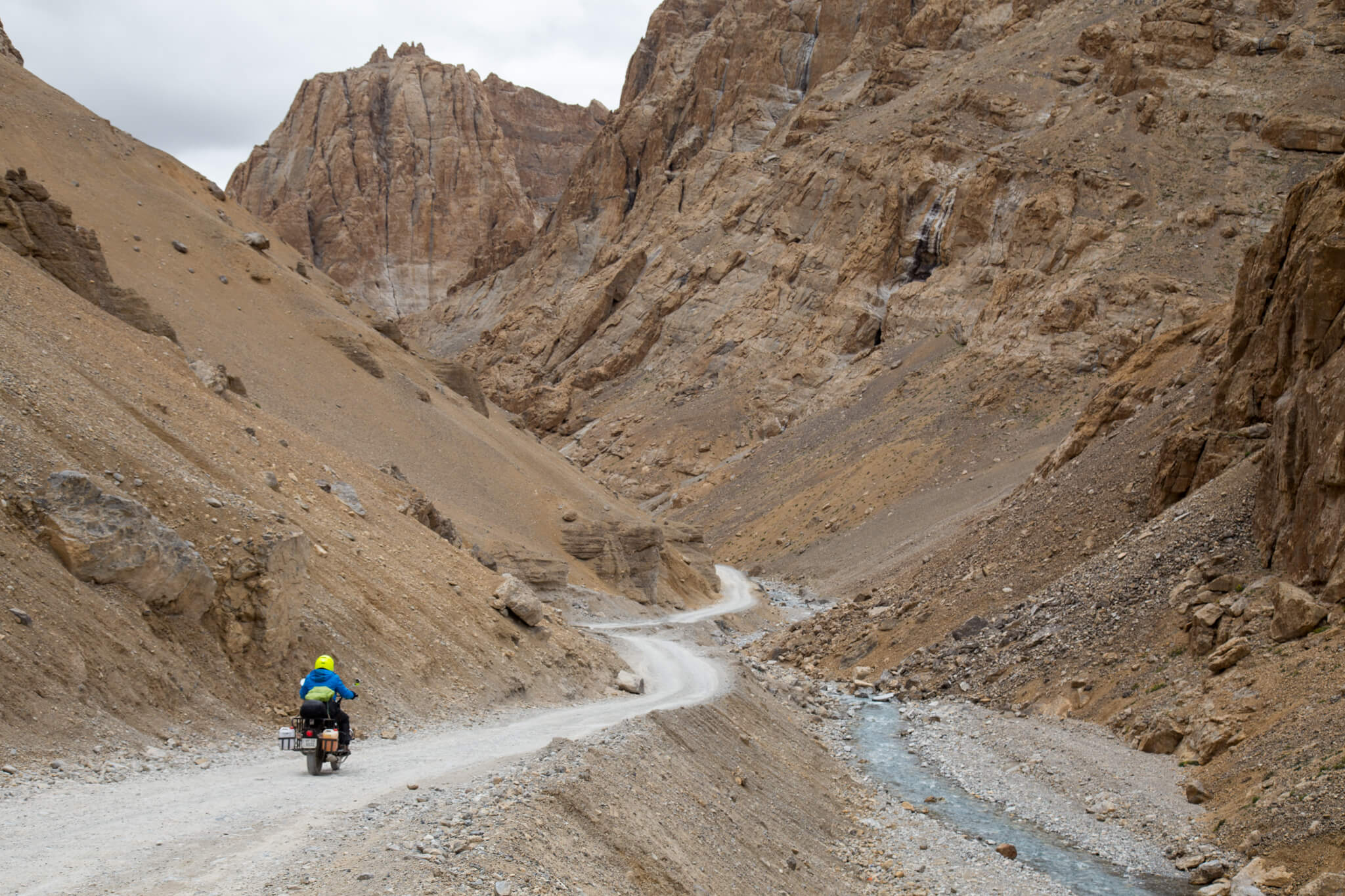
But the tracks are often stony, muddy, sometimes sandy… They are regularly intersected by inlets of water, which we ford. Potholes, mud and pebbles make for a testing ride. On average, we drive 7 hours a day.
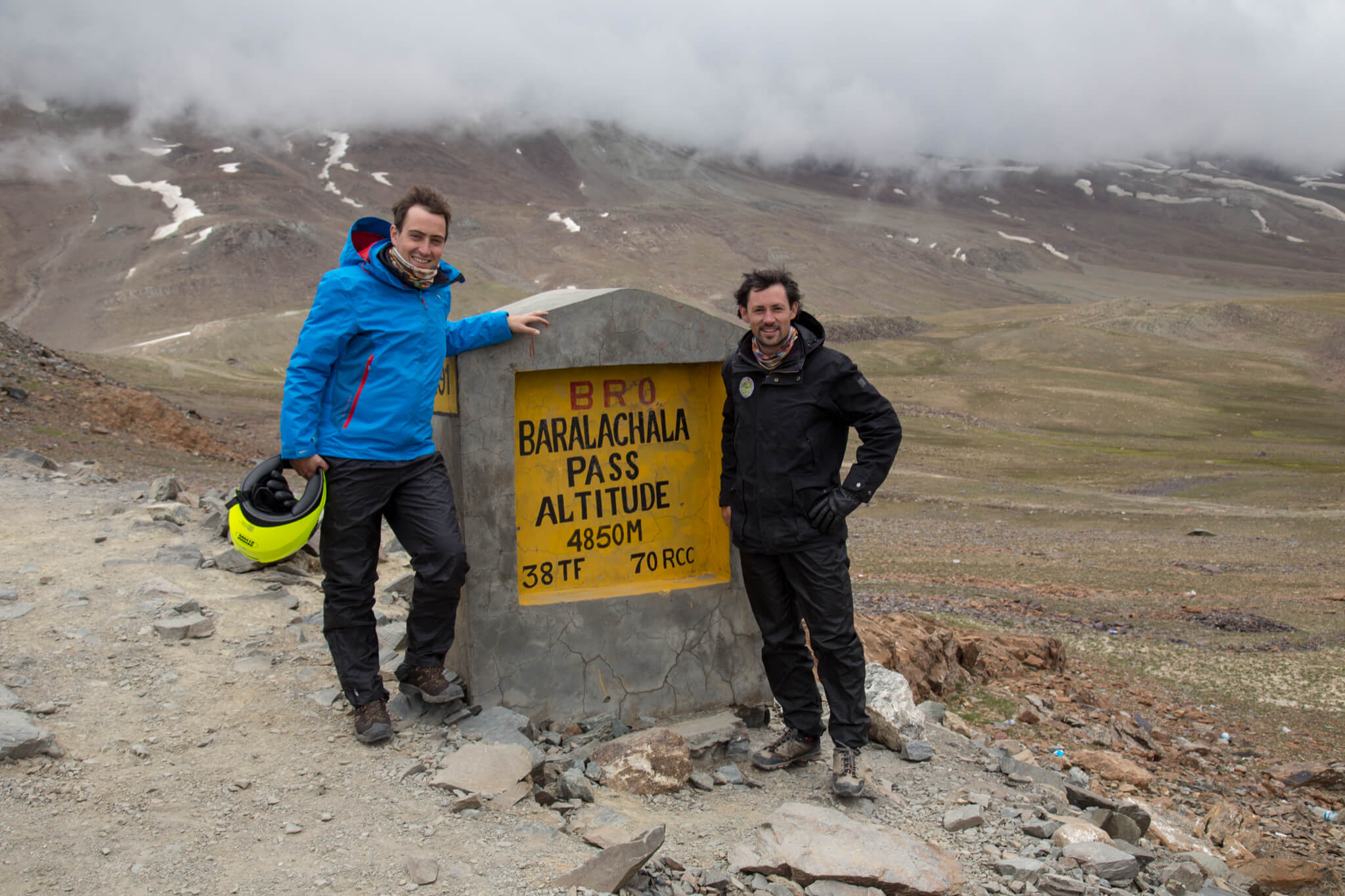
Baralacha La (4850 m) is our second pass on the route from Manali to Leh.
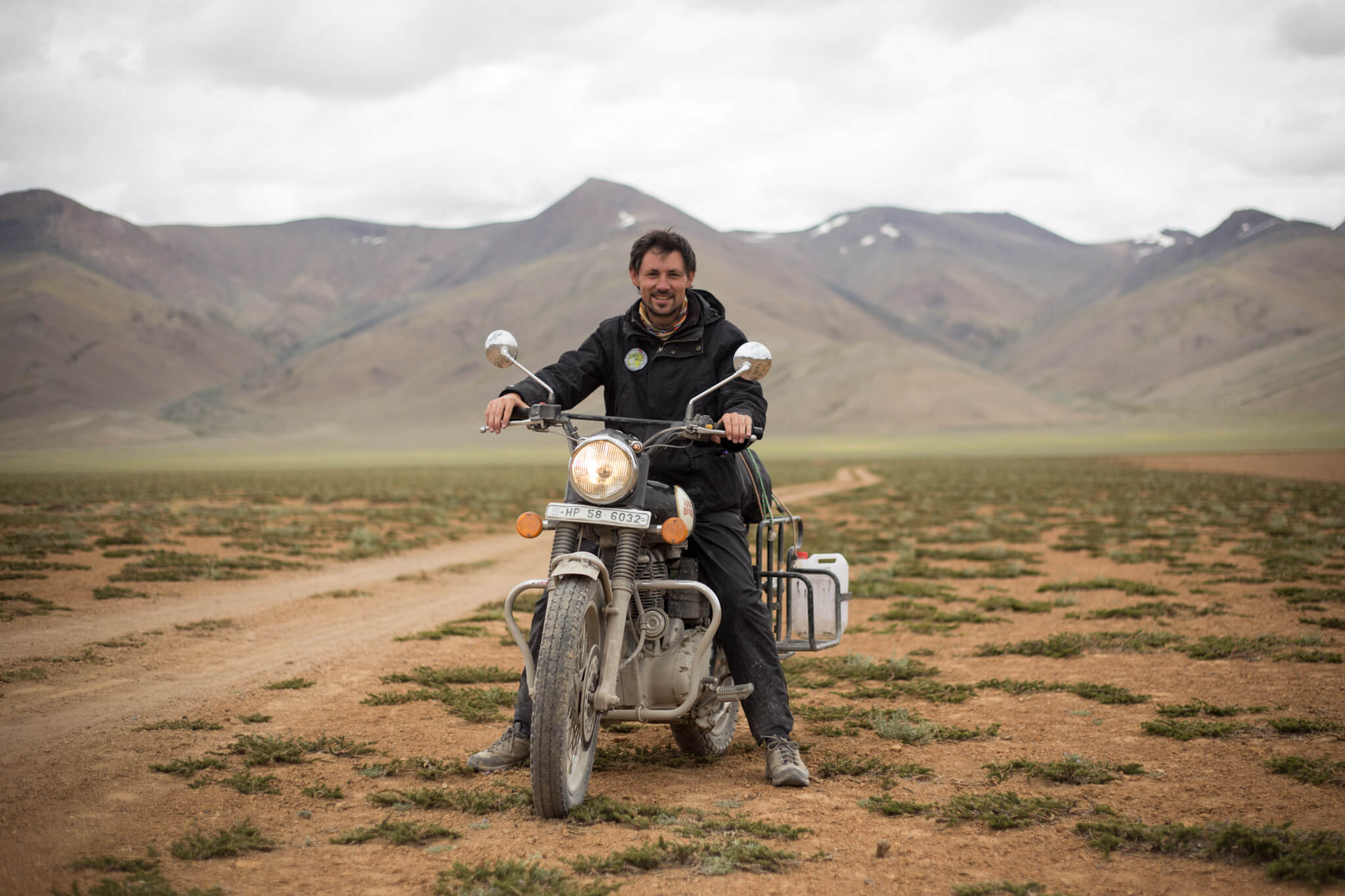
Between Manali and Leh, the road is predominantly mountainous, except for a small section where you cross large plains on a plateau.
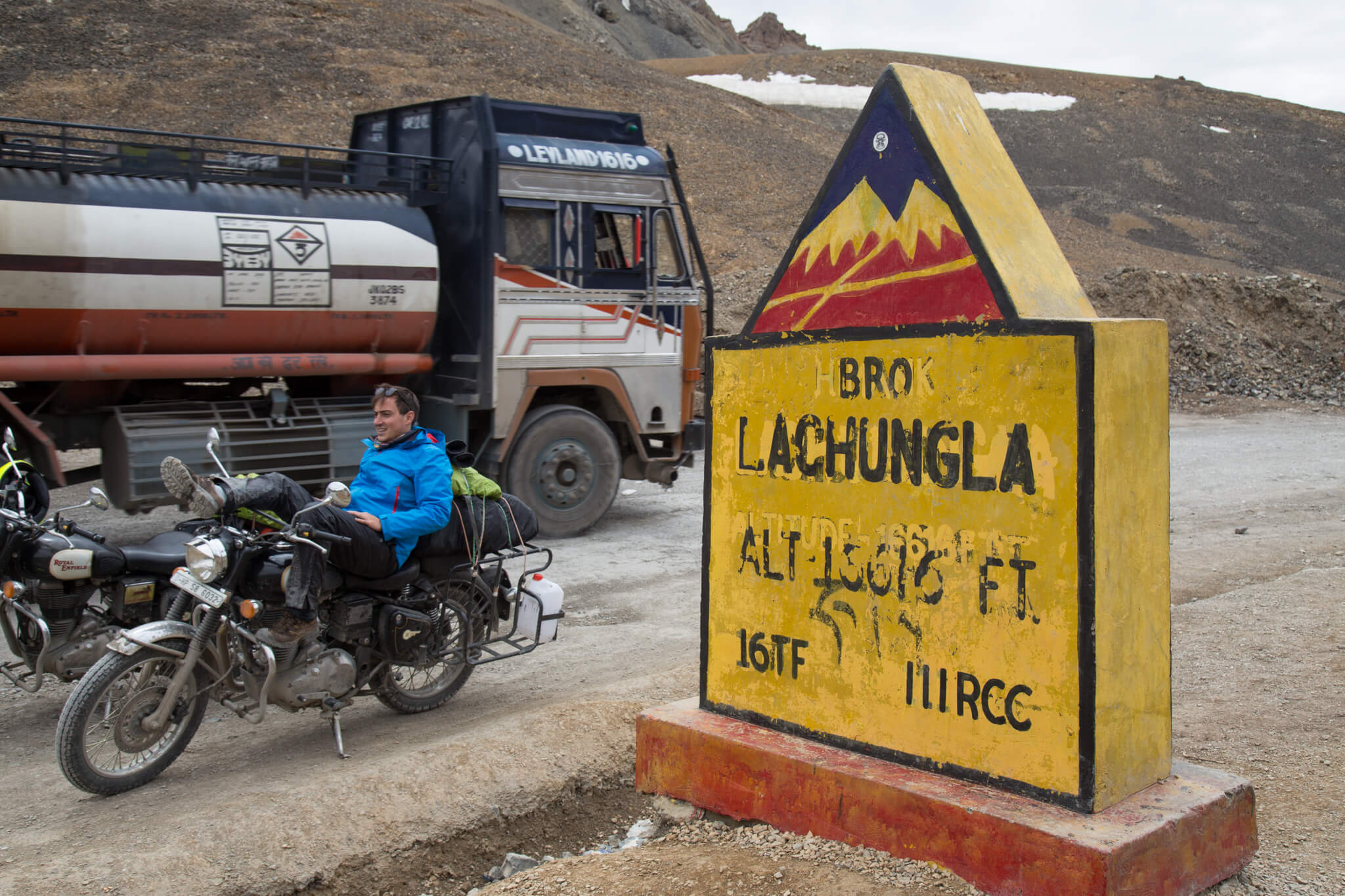
Lachungla La (5079 m), our third pass between Manali and Leh.
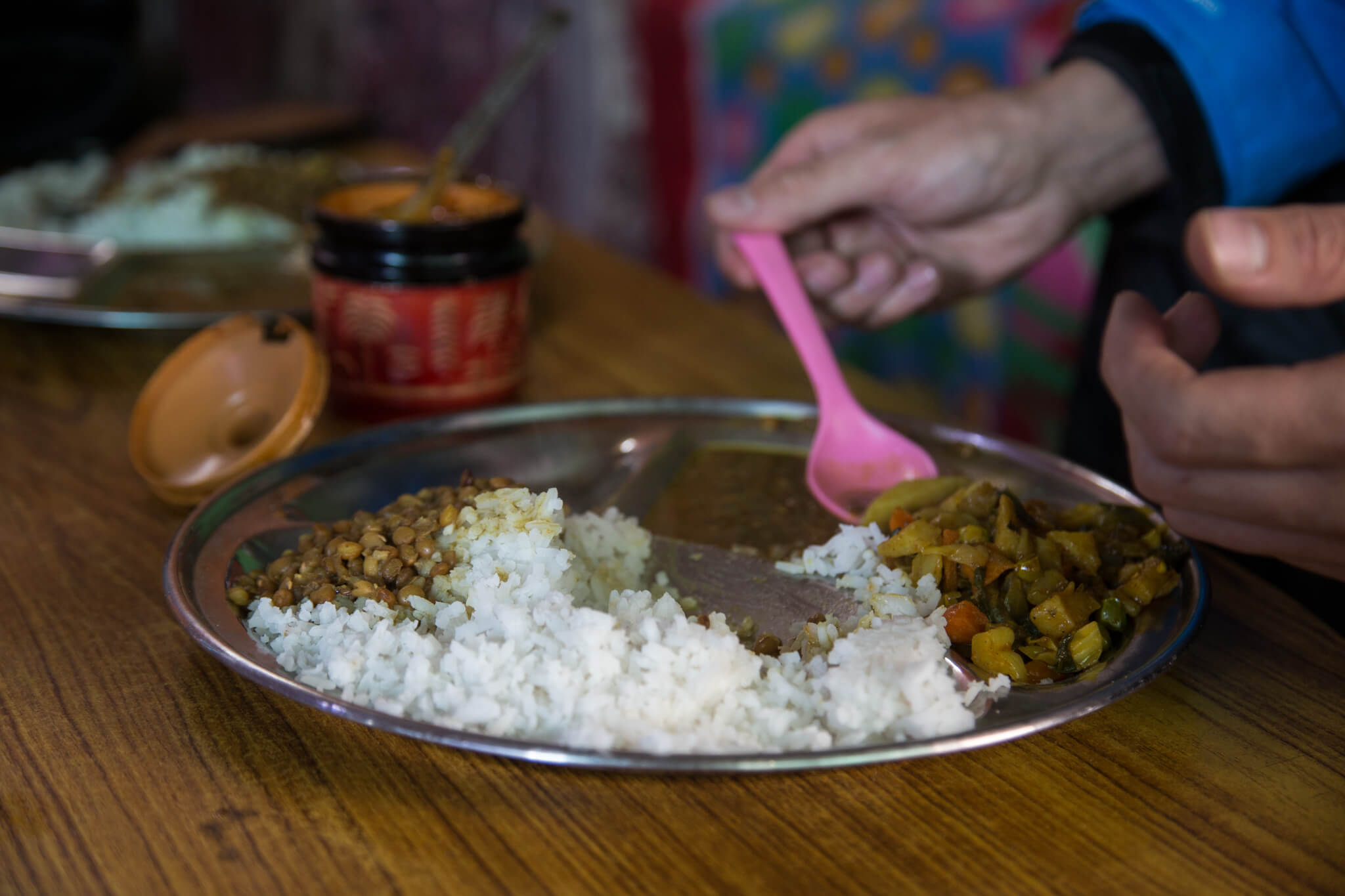
On the way, we stop for lunch in small restaurants. Often the menu is unique, and we eat the traditional “dal bhat” of rice, lentils and vegetables.
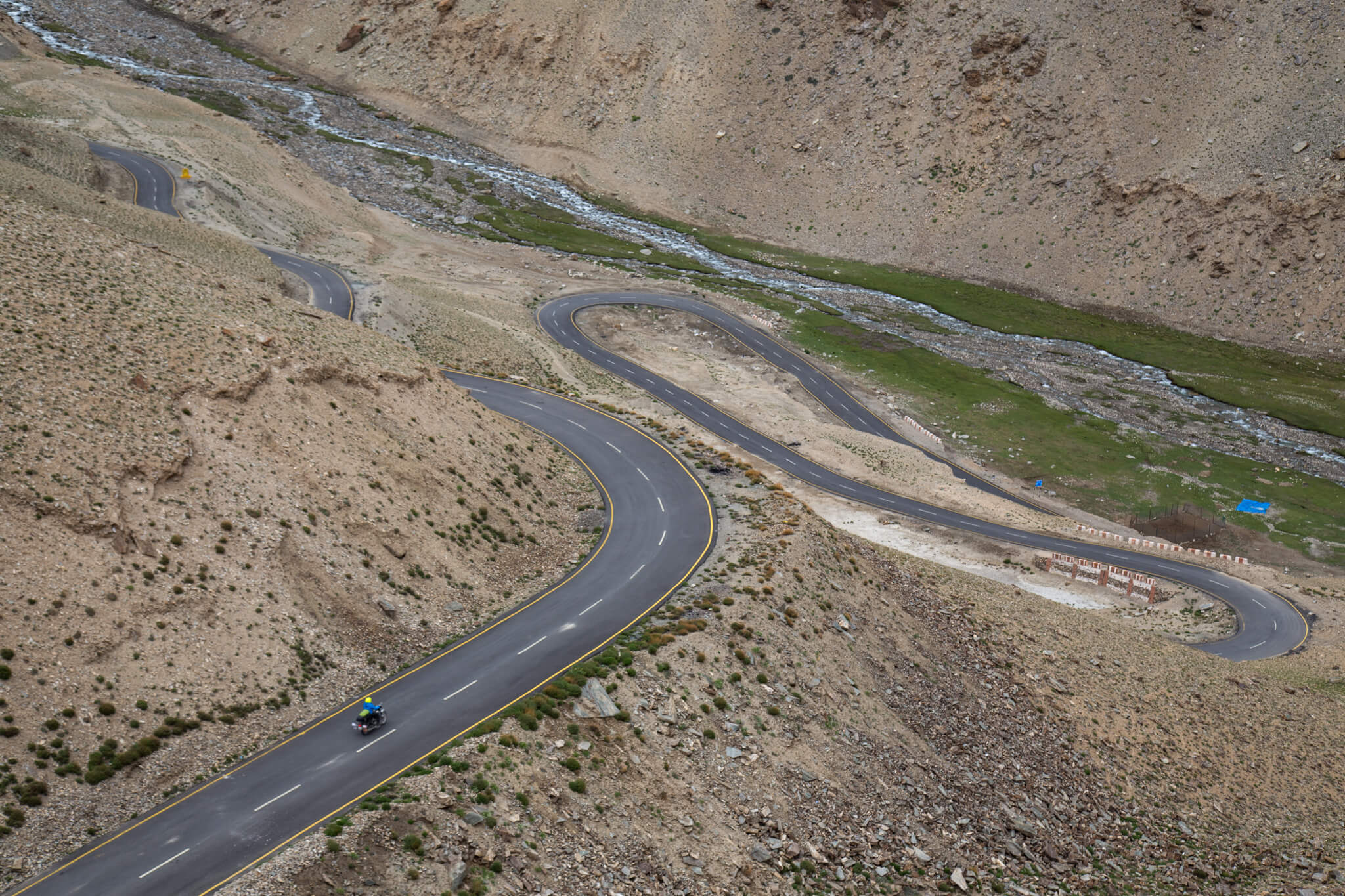
The road is magnificent, winding through the mountains. Even though there’s not much traffic, we have to keep our concentration on the bends.
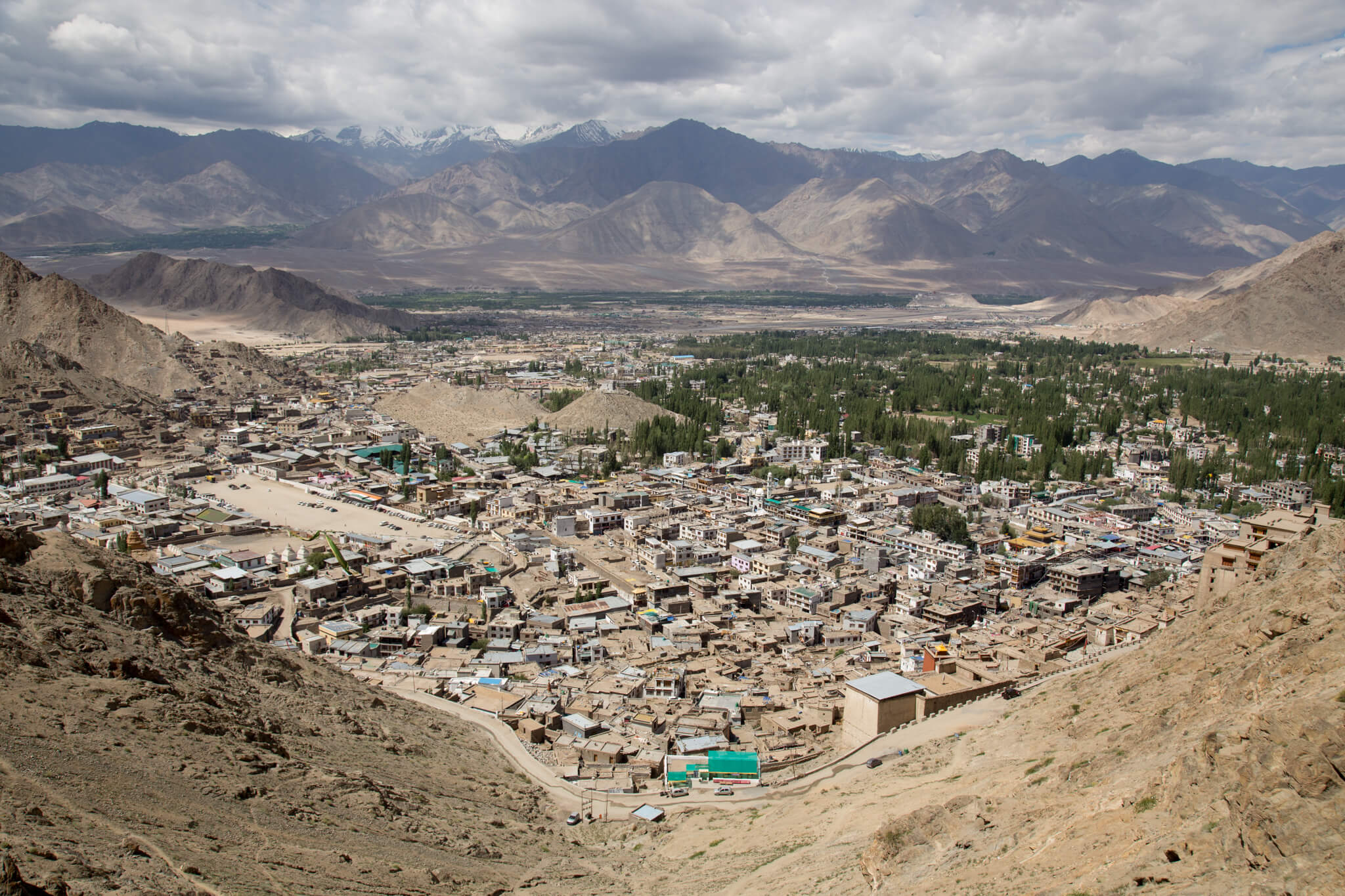
View of the town of Leh. Situated at an altitude of 3500 m, it is the most important town in the Ladakh region. In winter, the road leading to the town is impassable due to snow, and it is completely cut off from the rest of the world. The town’s main source of income is tourism, and in summer it receives many visitors keen on trekking and mountaineering.
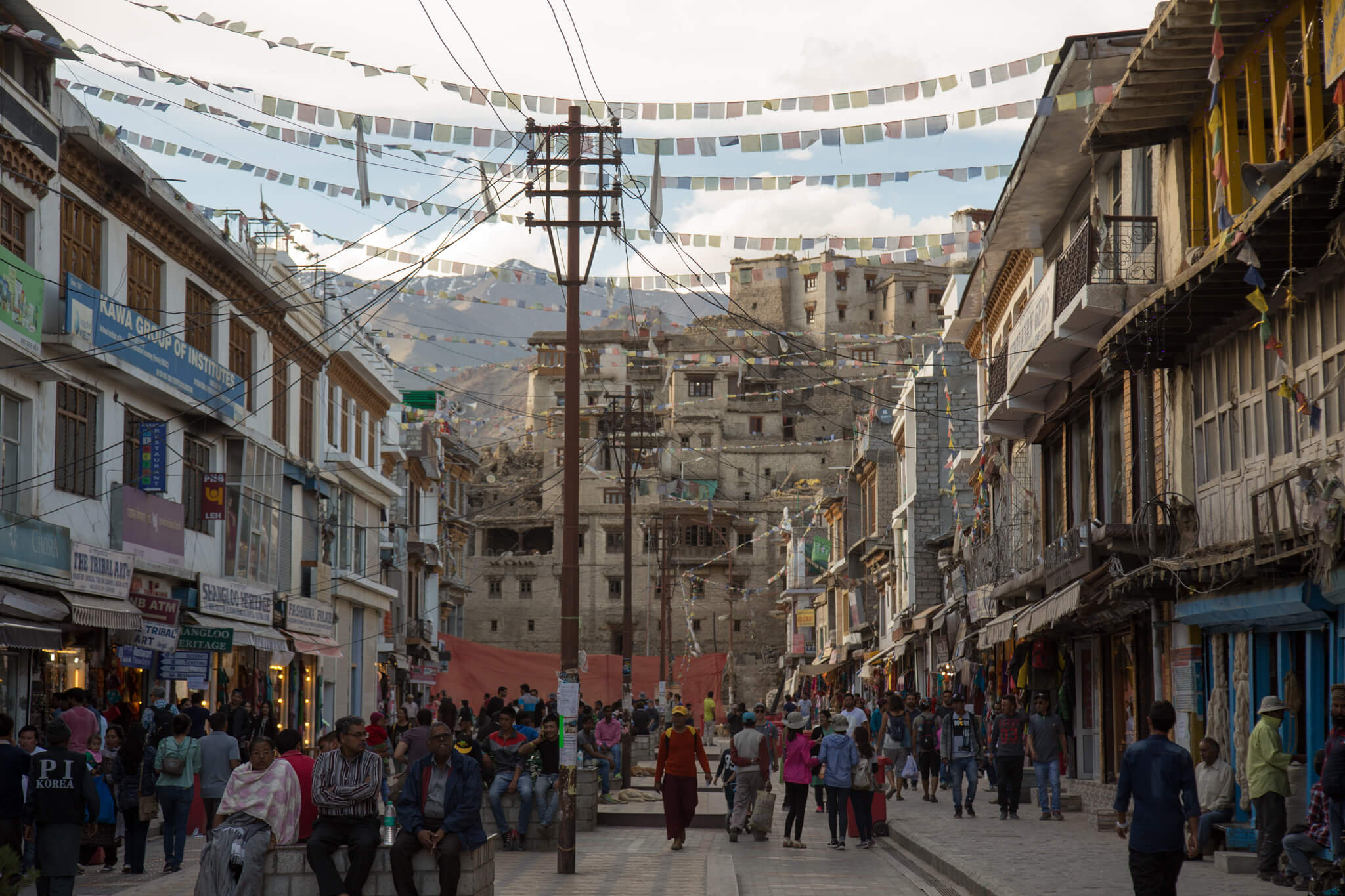
At the height of the season, the streets are teeming with people.
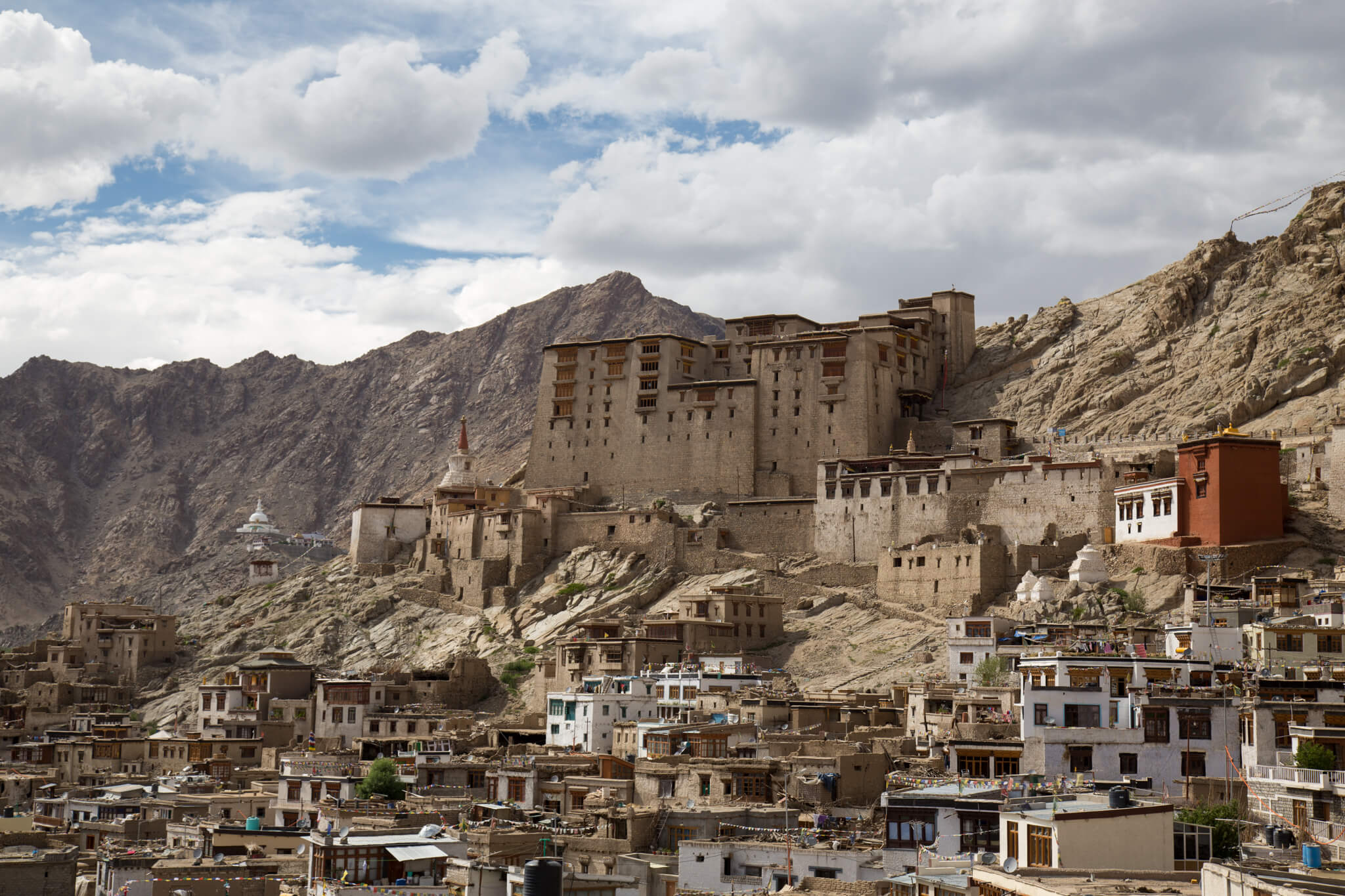
On the peak overlooking the town of Leh stands an imposing palace. Built in the 17th century on the plans of the Potala Palace in Lhasa, it is a former royal residence.
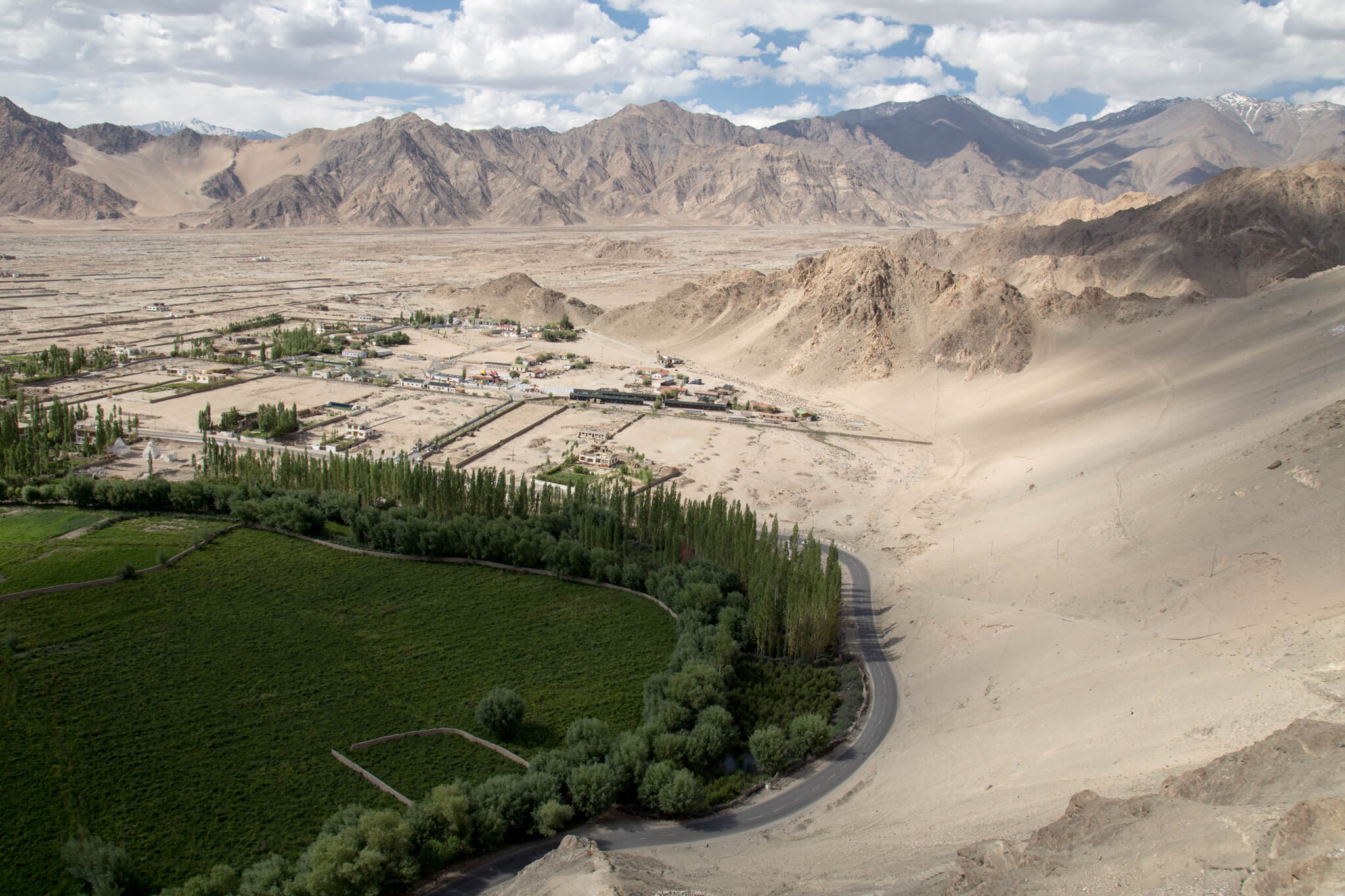
From the Thiksey monastery, the view opens out over the entire Indus Valley.
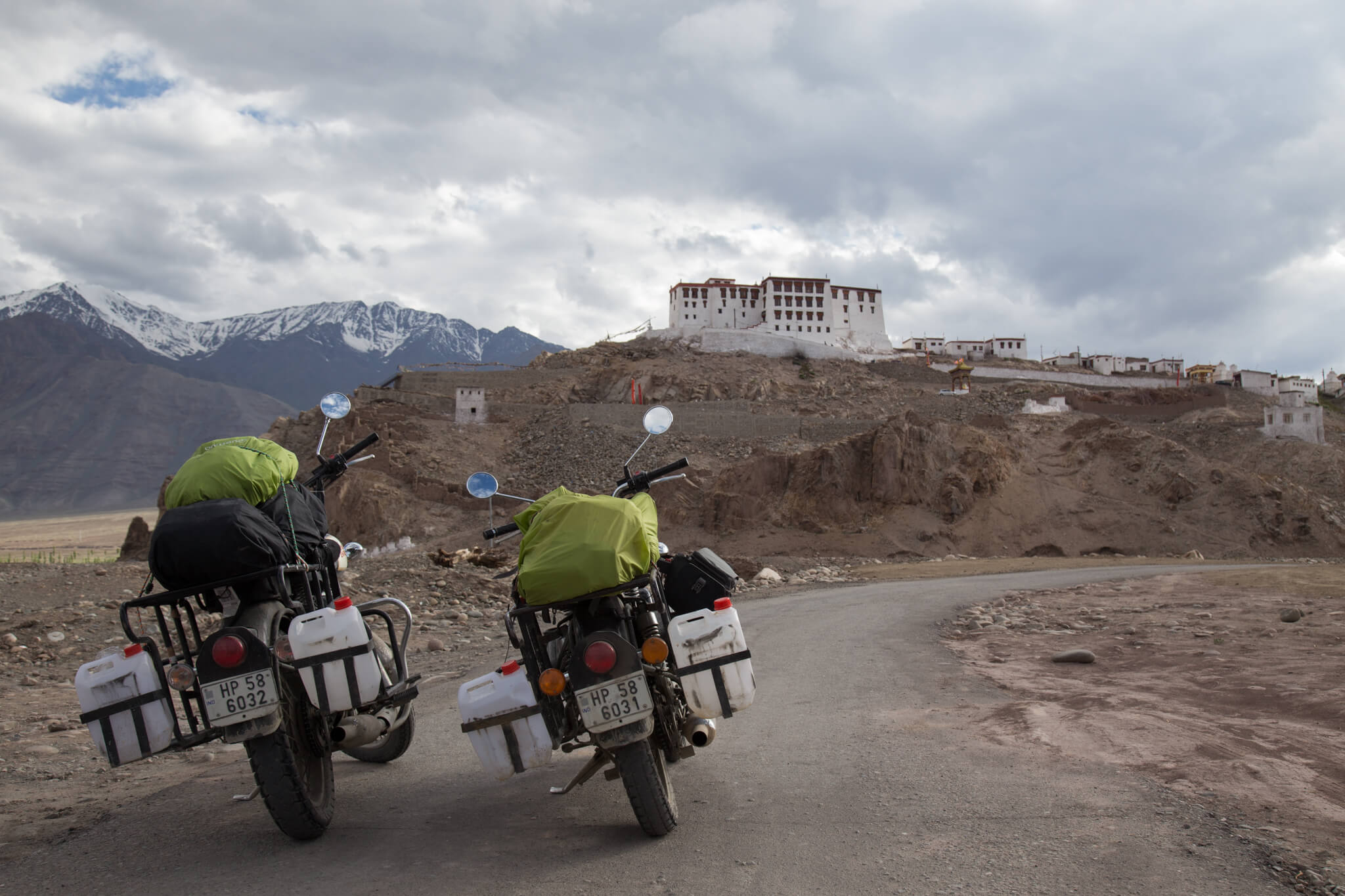
Stakna monastery near Leh. Tibetan Buddhism was introduced to Ladakh in the 10th century. Numerous monasteries, also known as “gompas”, were built at this time to spread Lamaism.
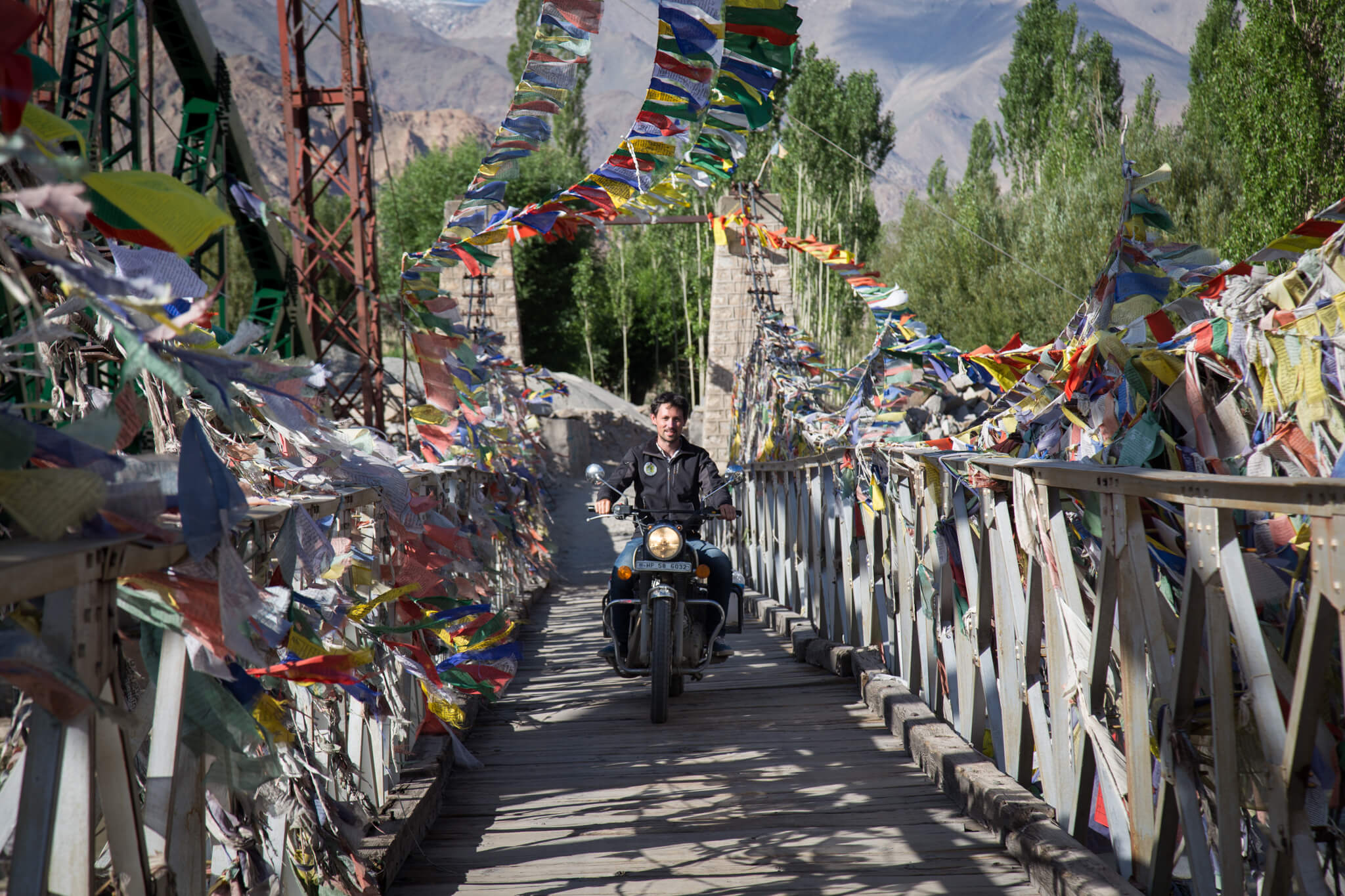
We cross countless bridges on our journey through Ladakh. This one is particularly narrow and decorated with a multitude of prayer flags.
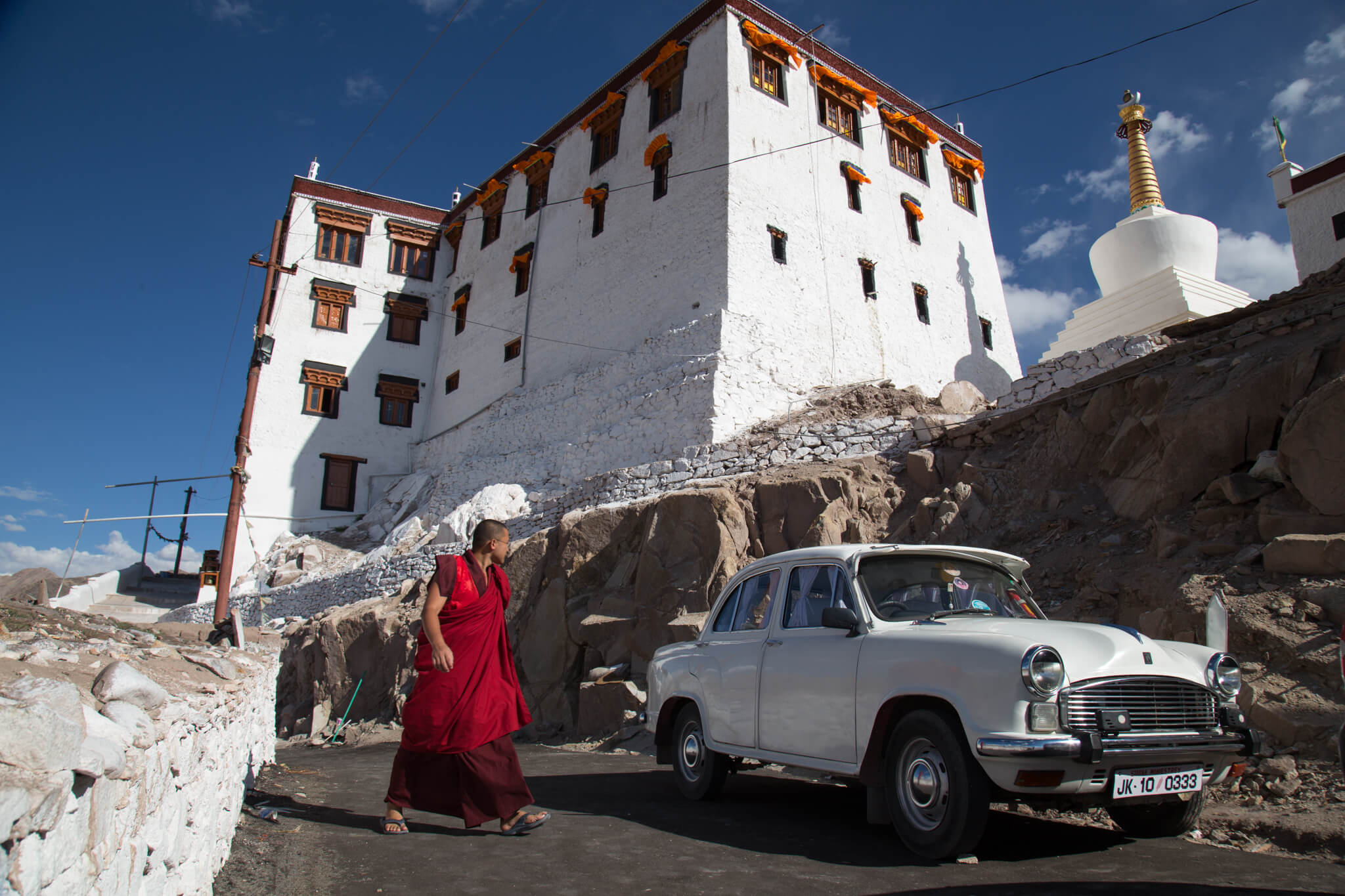
Perched on a hill, the Stakna monastery is home to some thirty monks. One of them passes an Ambassador, India’s iconic car.
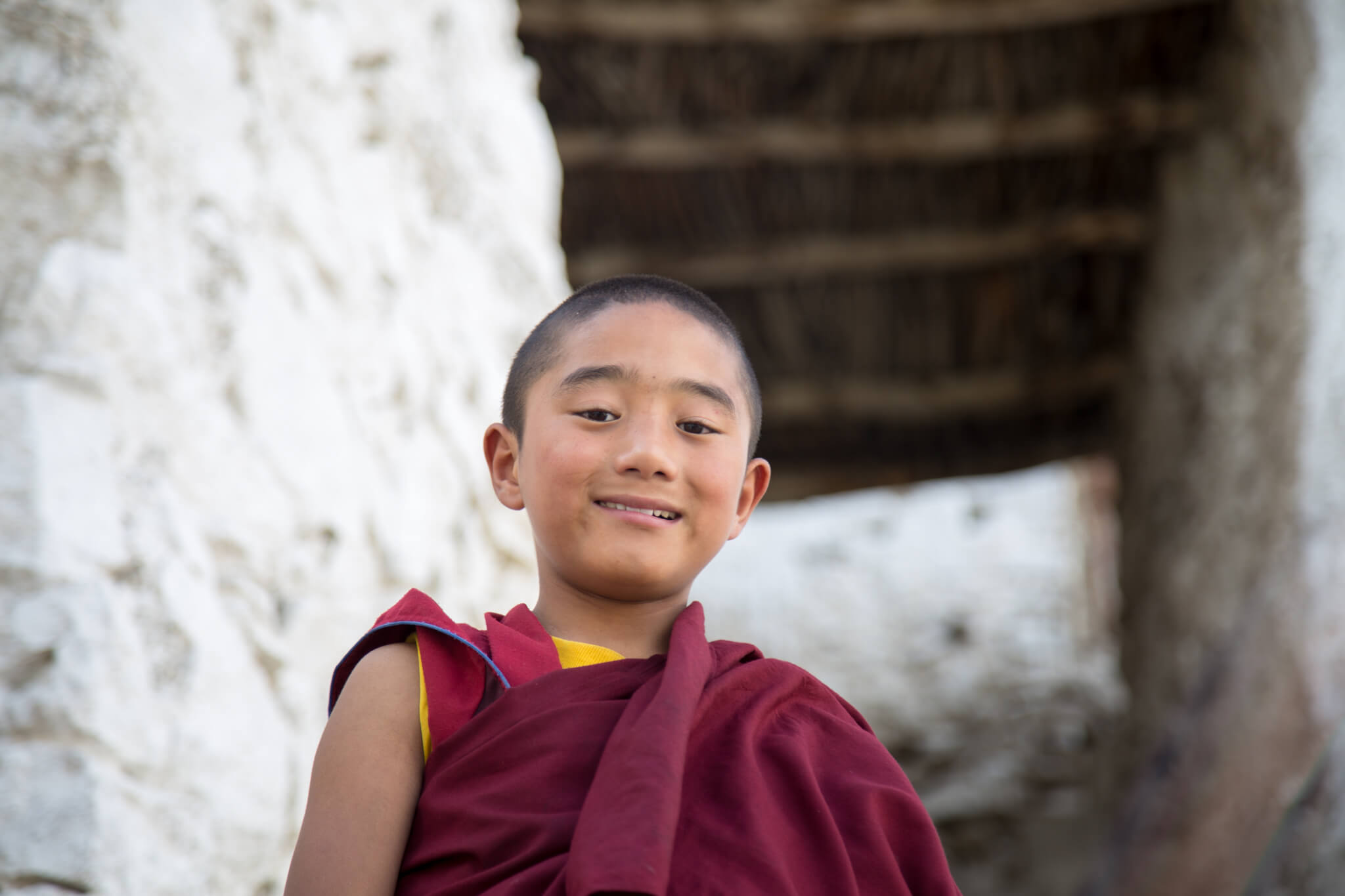
A young monk in the Thiksey monastery. In terms of surface area, this is the largest monastery in Ladakh, housing around 60 monks.
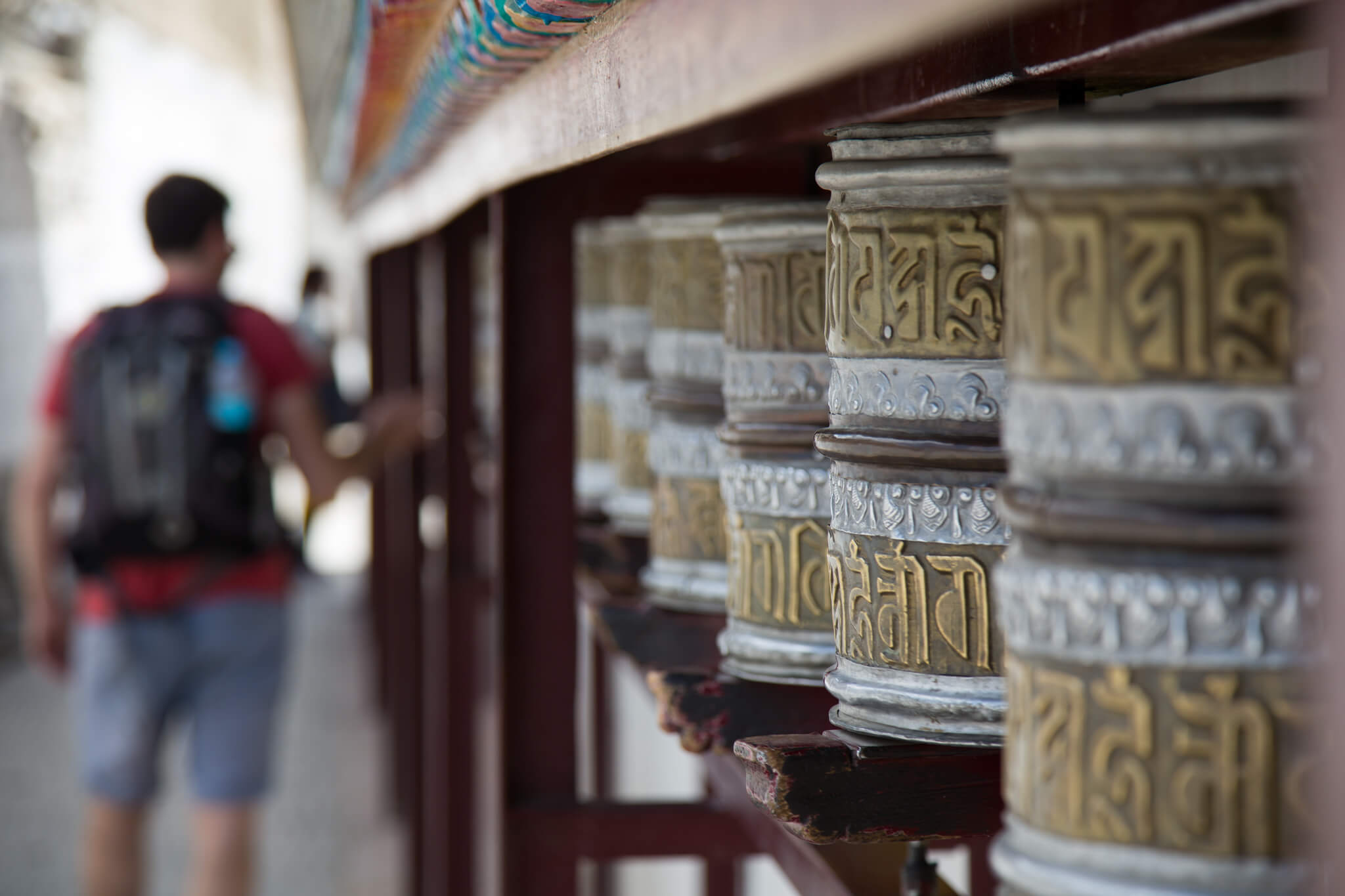
Visit to the Soma Gompa in Leh. According to Buddhist rite, turning the prayer wheels has the same spiritual value as reciting them.
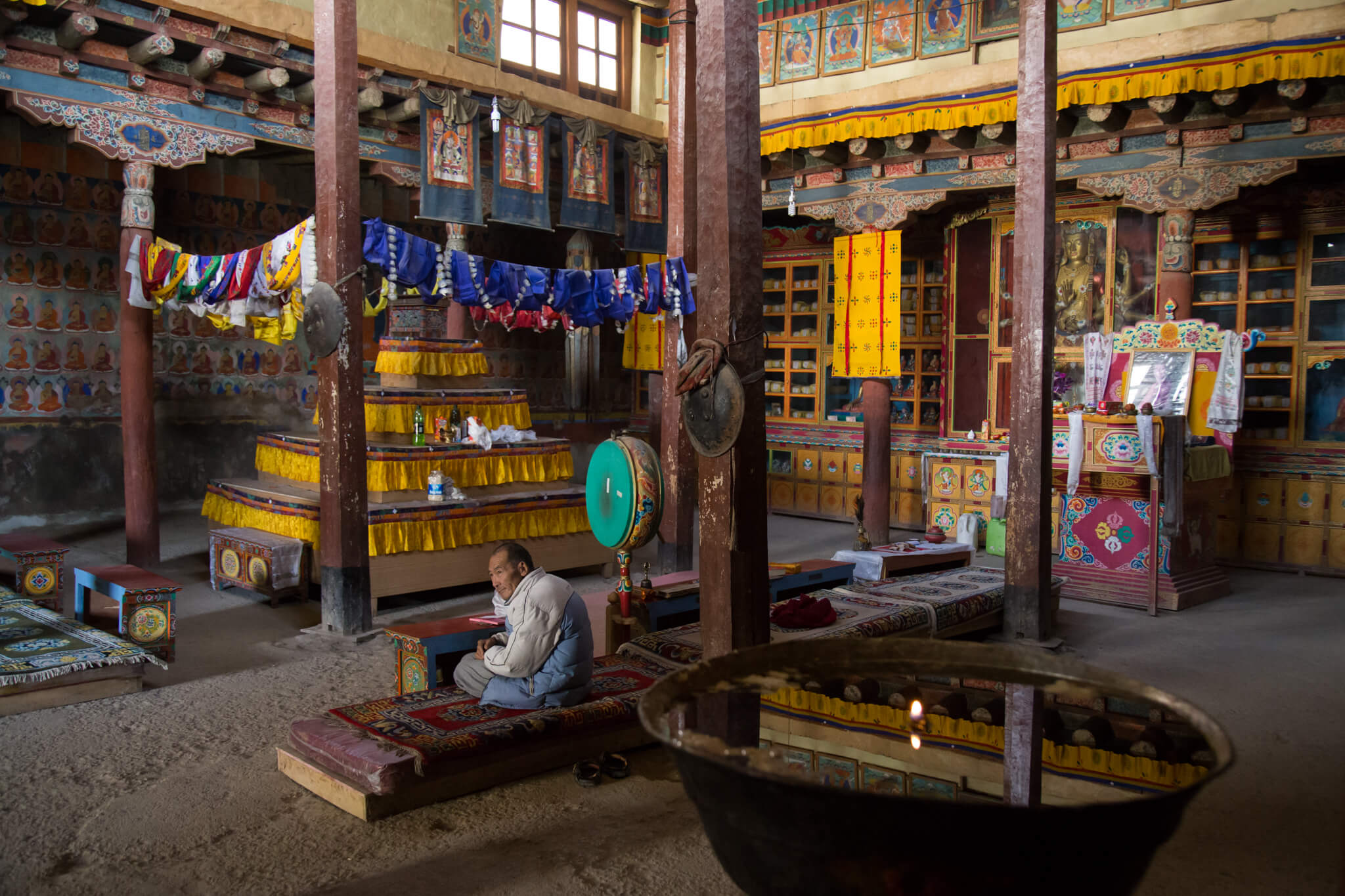
In silence, we visit the interior of Leh’s palace temple.
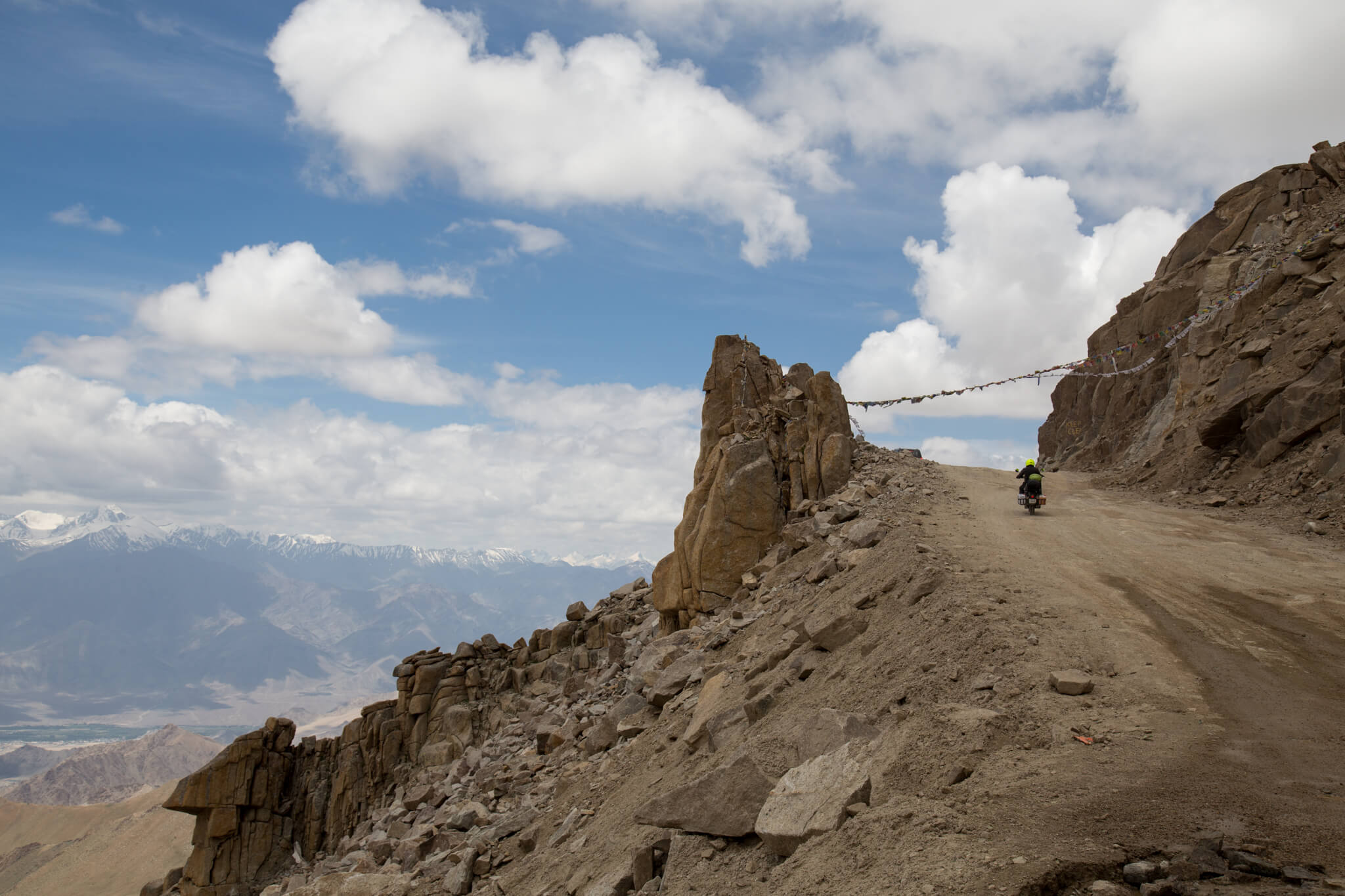
We’re heading for the highest pass in the world accessible by road. At an altitude of over 5,000 m, there’s no more tarmac. Unsurprisingly, the trail is difficult.
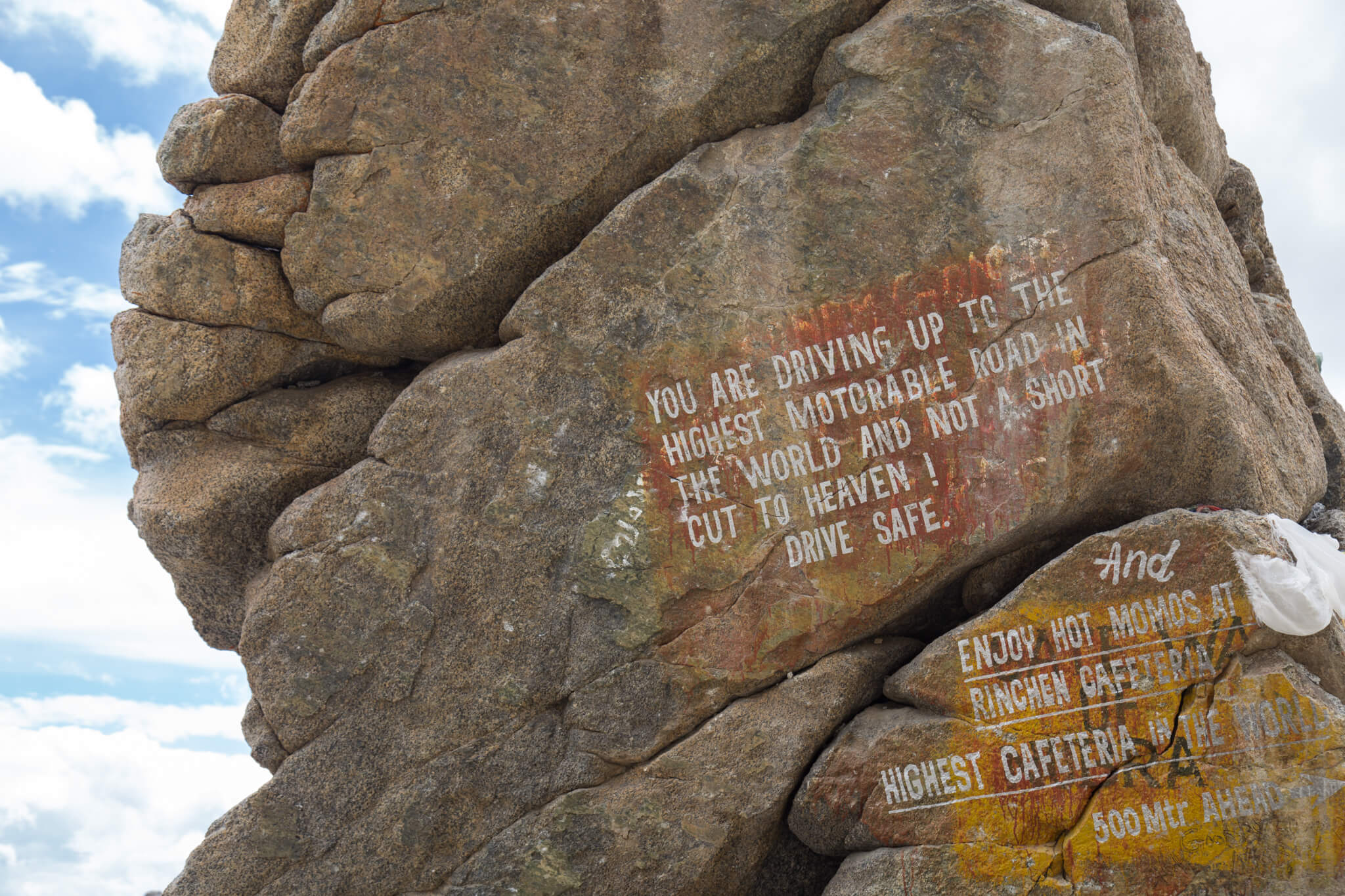
On the edge of the track, inscriptions remind us that we’re not far from our goal.

Khardong La pass, 5359 m altitude. It’s the highest pass in the world! After a difficult ascent due to the poor quality of the track, the lack of oxygen and the cold, we celebrate our arrival at the summit.
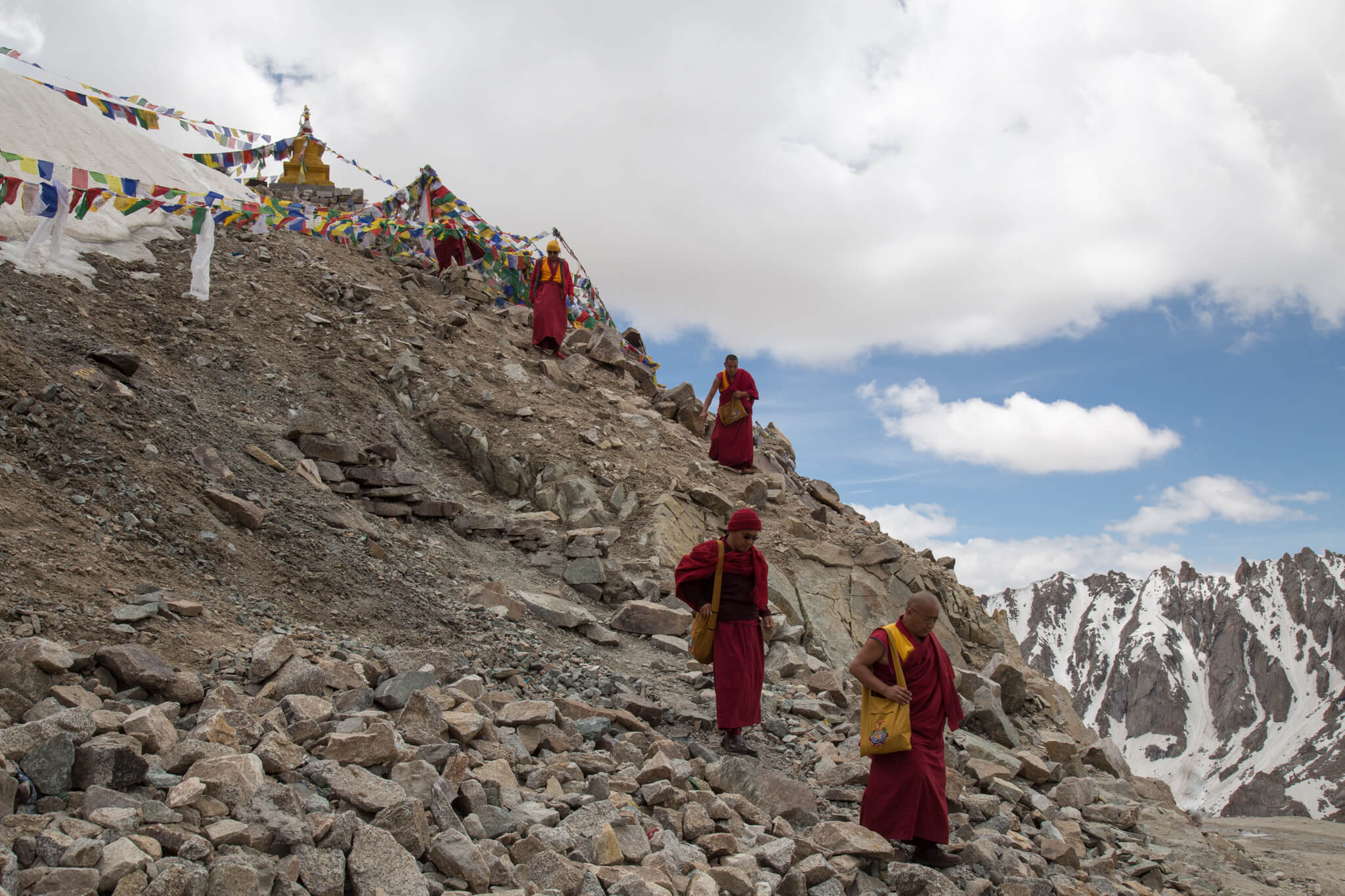
A stupa has been built on a hill on the Khardong La pass. Monks come down after praying there.
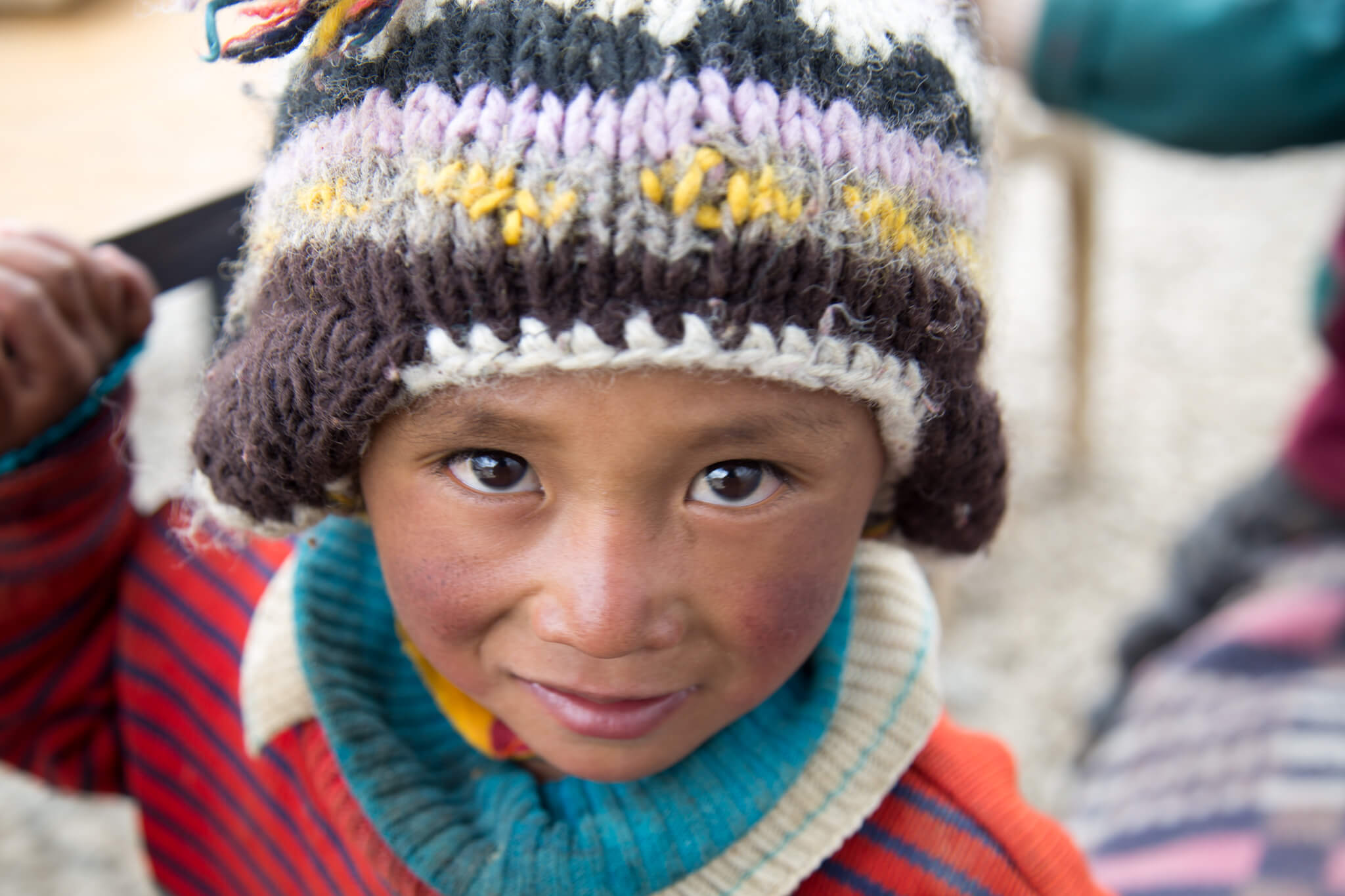
As we take a roadside “tchaï”, we are visited by a young boy.
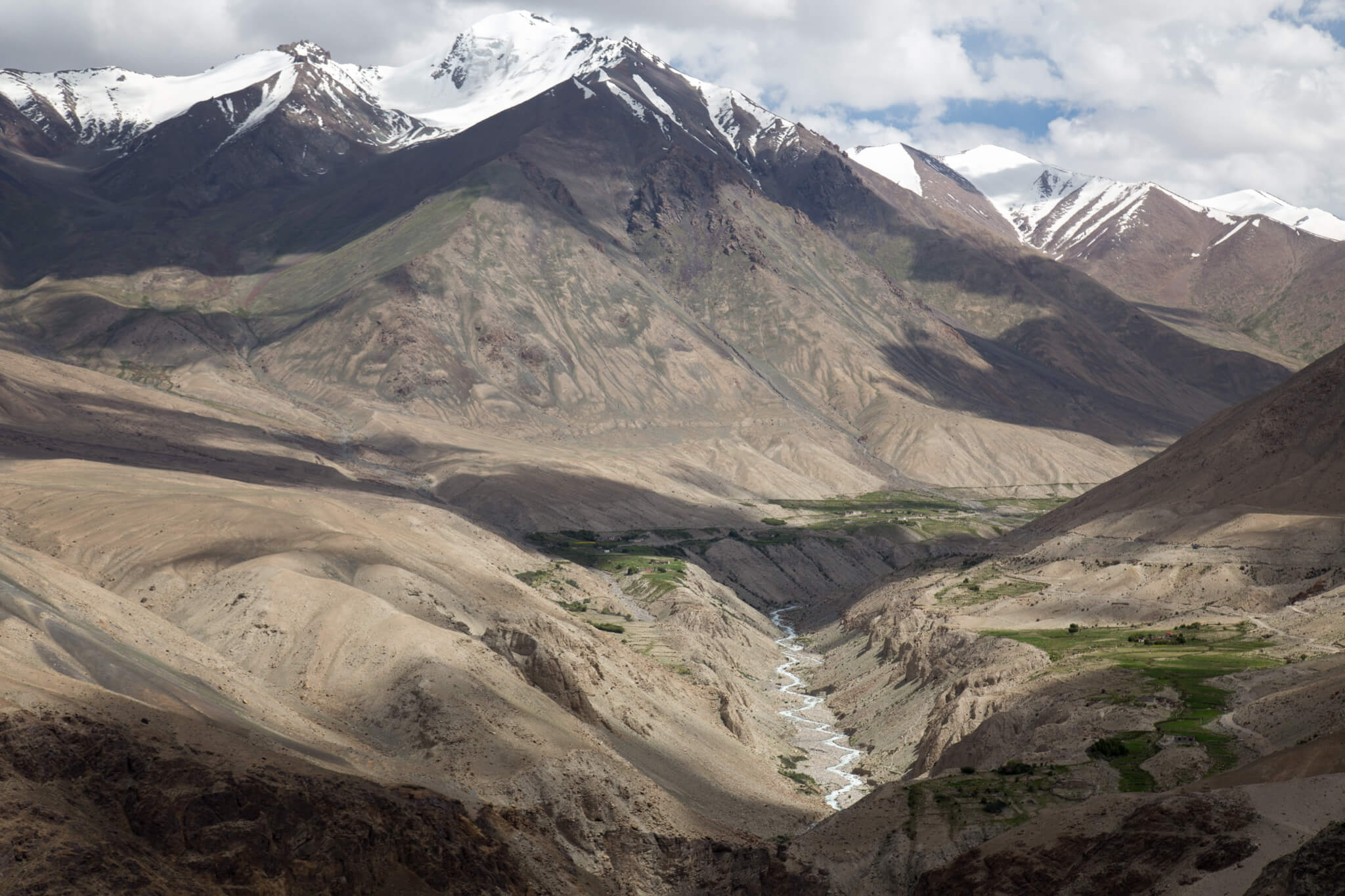
Typical Ladakhi landscape, with snow-capped peaks, a river running through a gorge and winding roads.
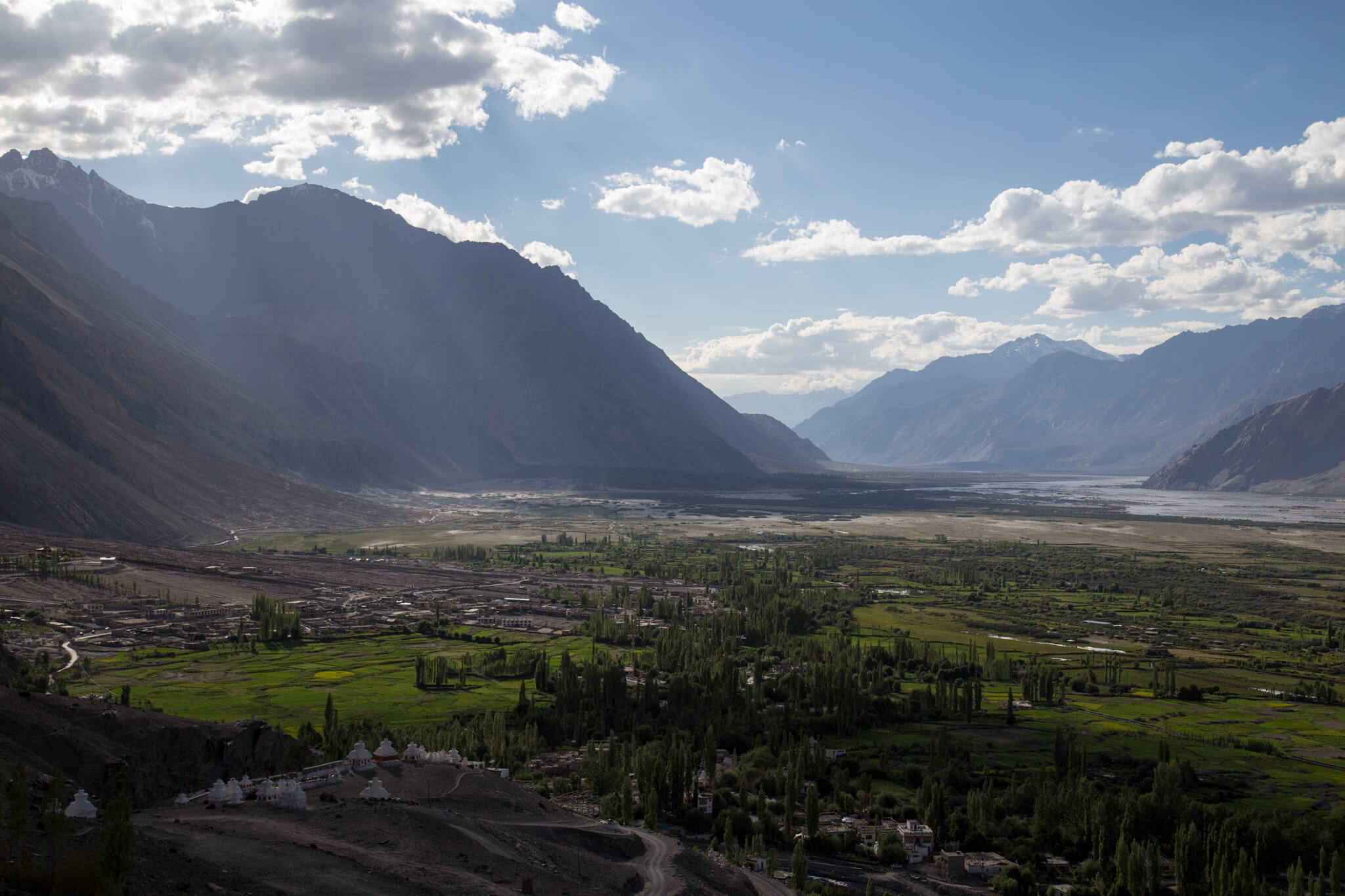
150 km north of Leh, we enter the Noubra valley. It is also called “the orchard” for its vegetation.
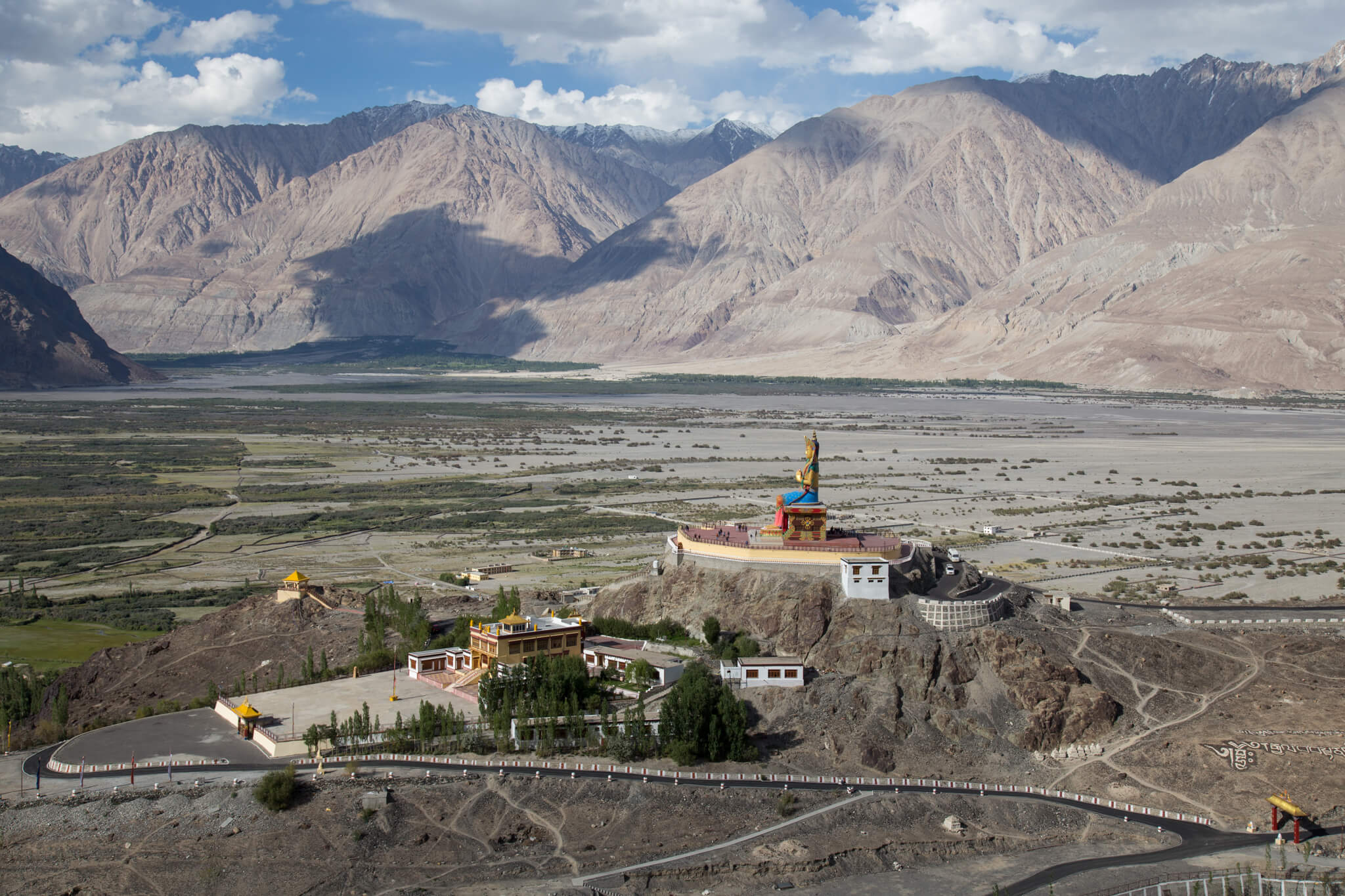
In Diskit, in the Noubra valley, a 32 m-high Buddha faces the Shyok river towards Pakistan. Inaugurated by the Dalai Lama on July 25, 2010, the statue was built to protect the village of Diskit, prevent future war with Pakistan and promote world peace.
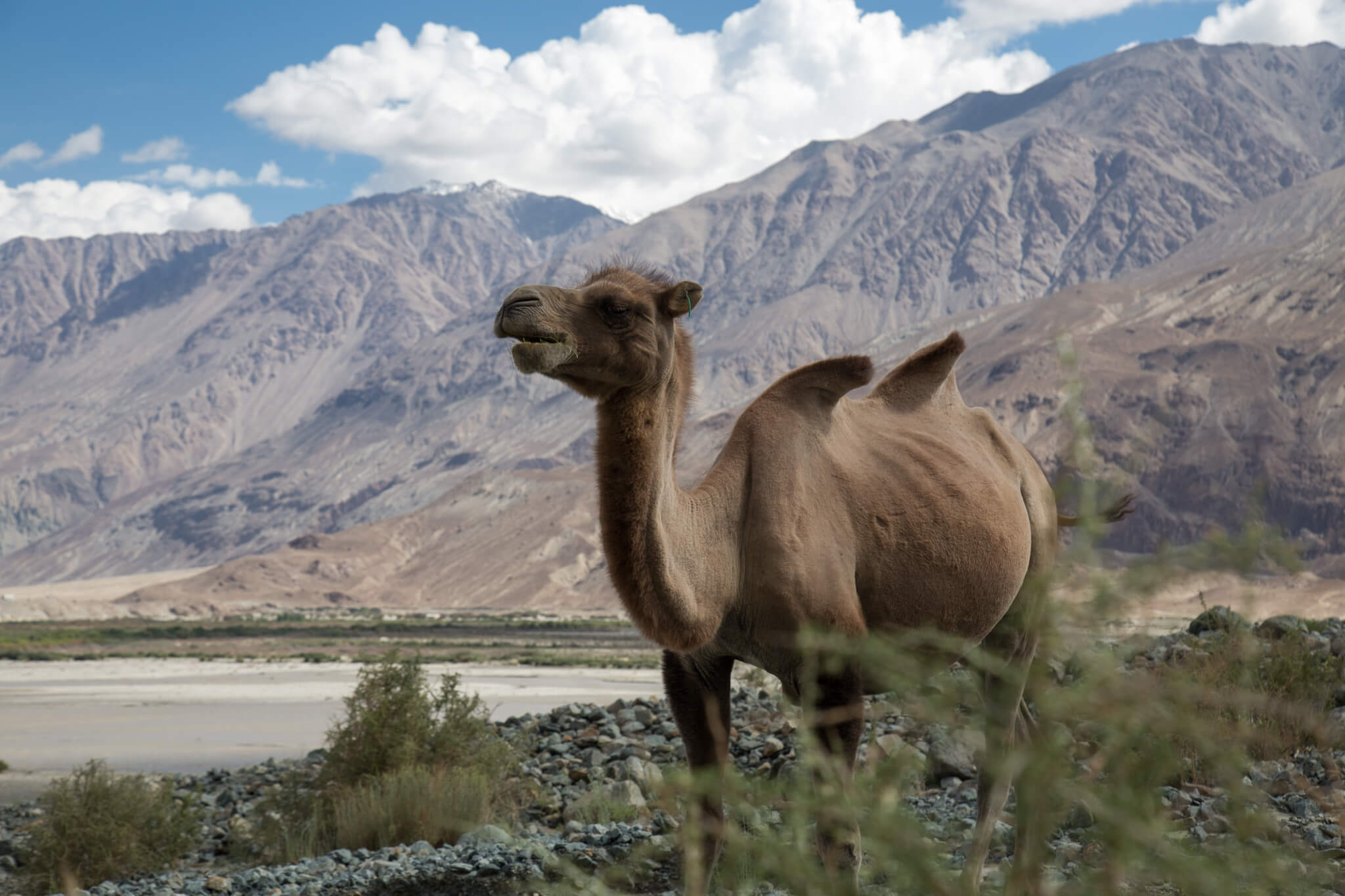
The valley is home to wild dromedaries. They were introduced over the last few centuries by merchant caravans on the trade route between India and Central Asia.
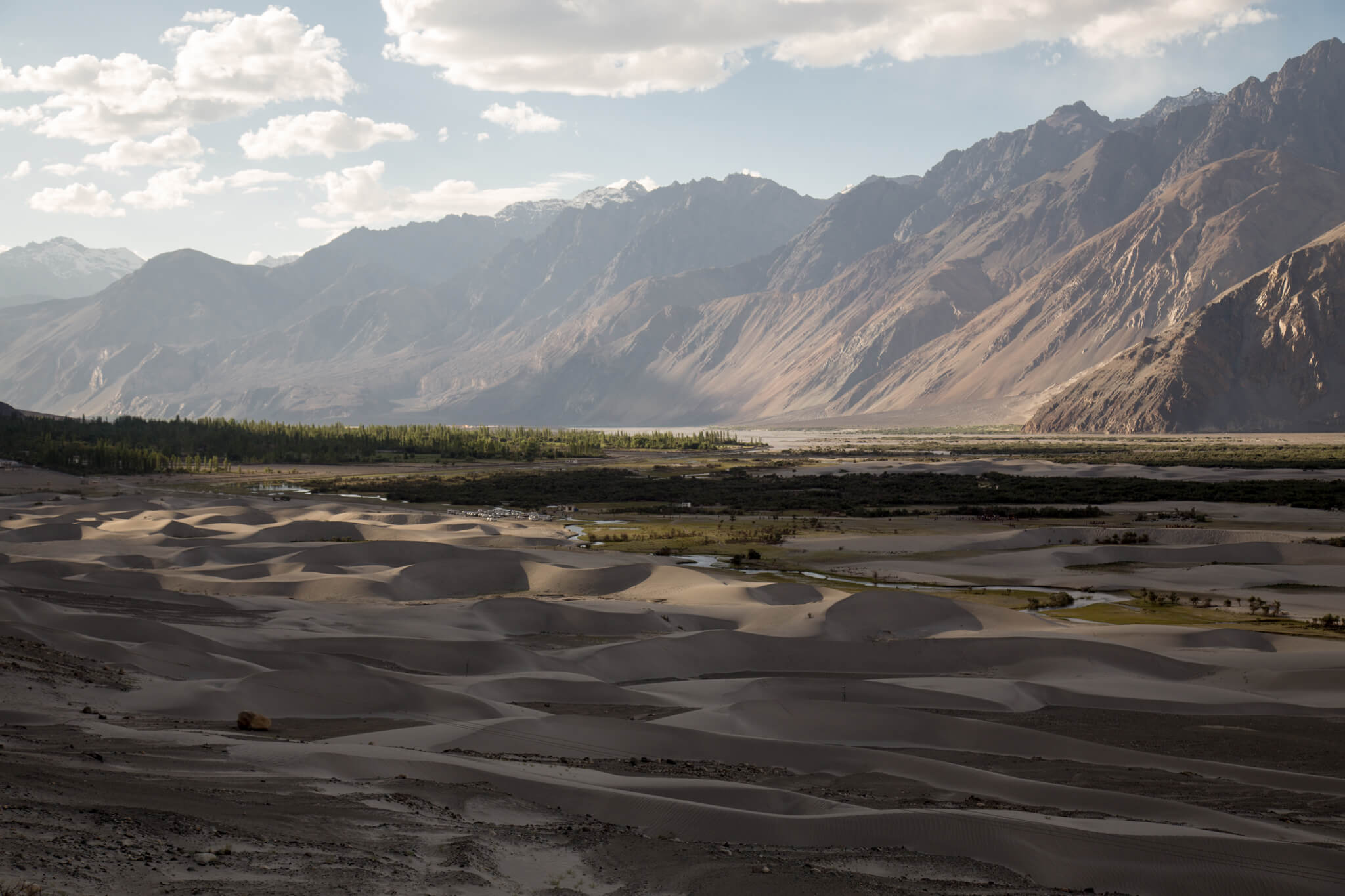
With sand dunes and vegetation near rivers, the environment is ideal for camels. The Noubra valley is the point from which we choose to return to Manali. In Ladakh, there is only one road through the region. In two weeks, we unfortunately don’t have the time to go all the way round. So we turn around and start driving in the other direction, towards Manali.
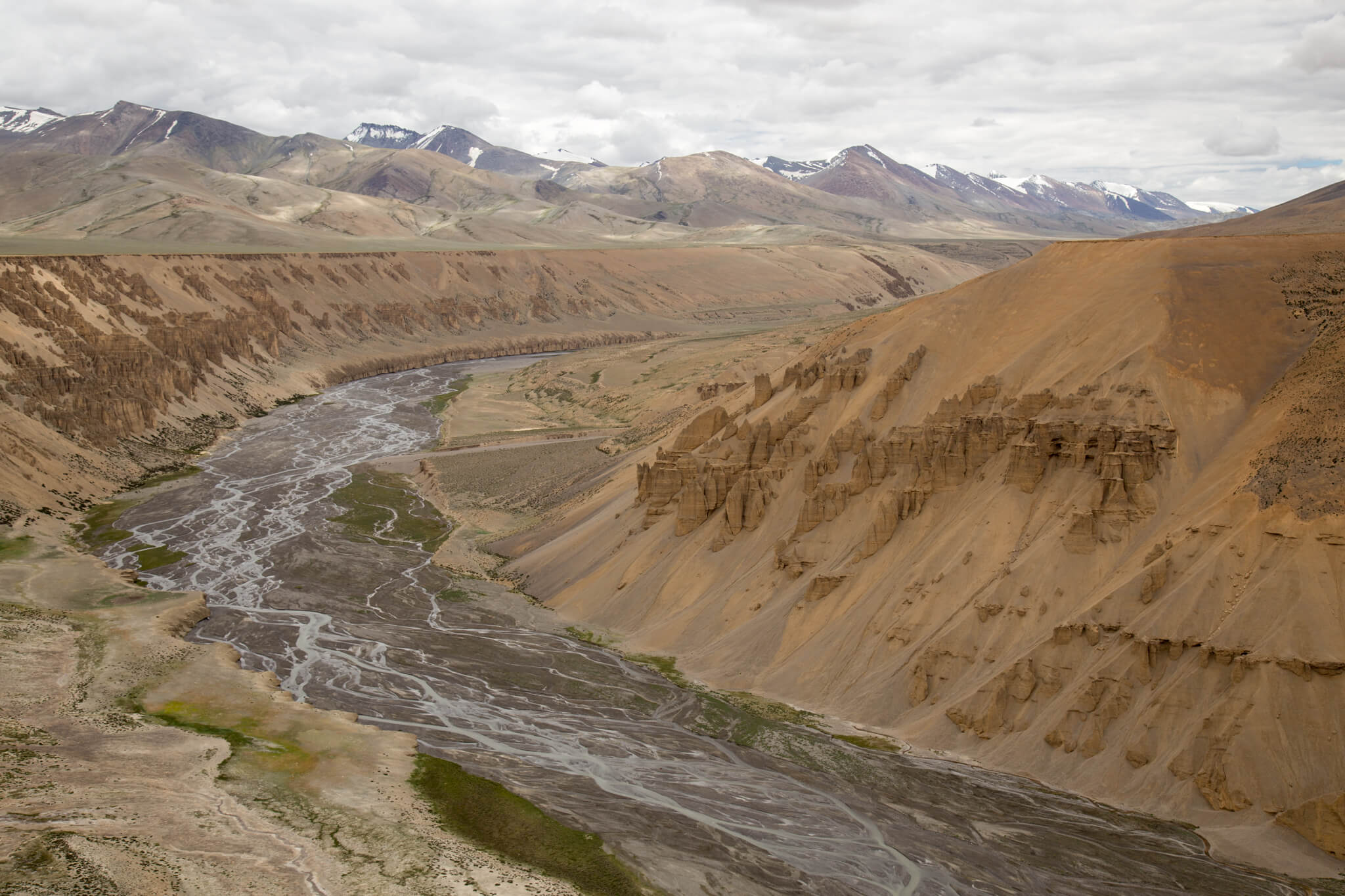
Ladakh’s imposing landscape.
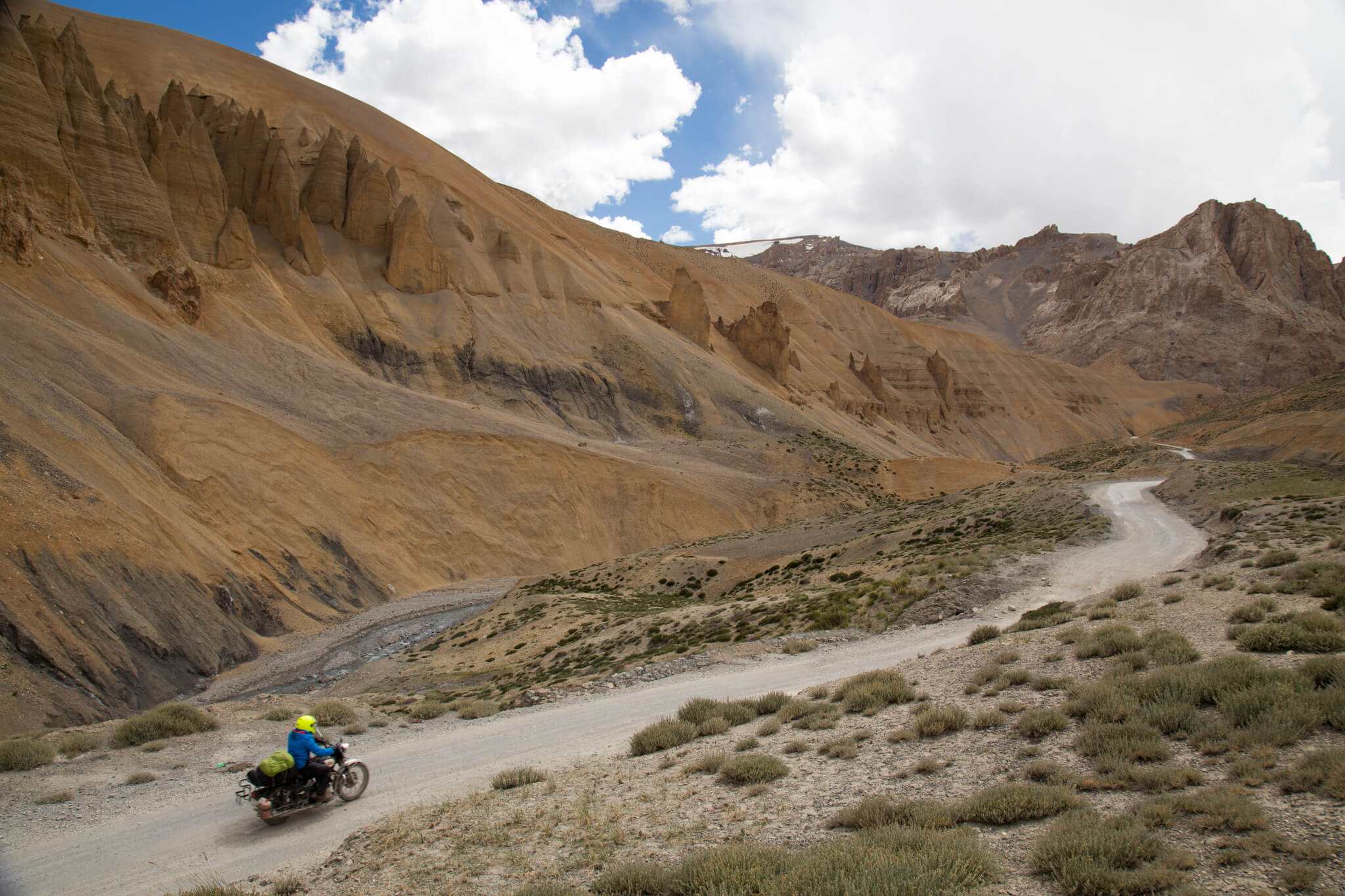
On the stony tracks, we make good progress at around 30 km/h.
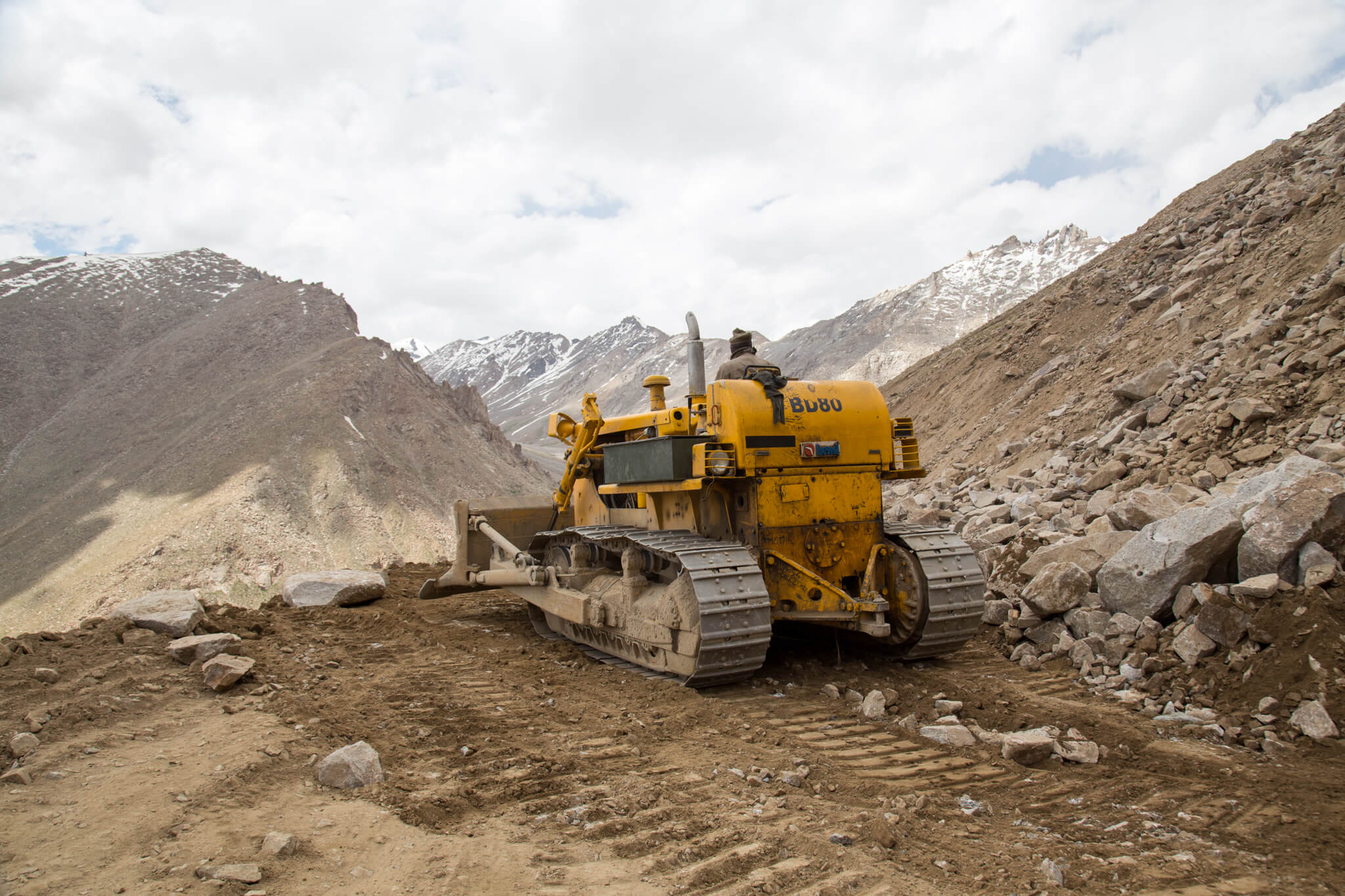
Once again, we’re blocked by a landslide. Fortunately, a backhoe quickly arrives to clear the road.
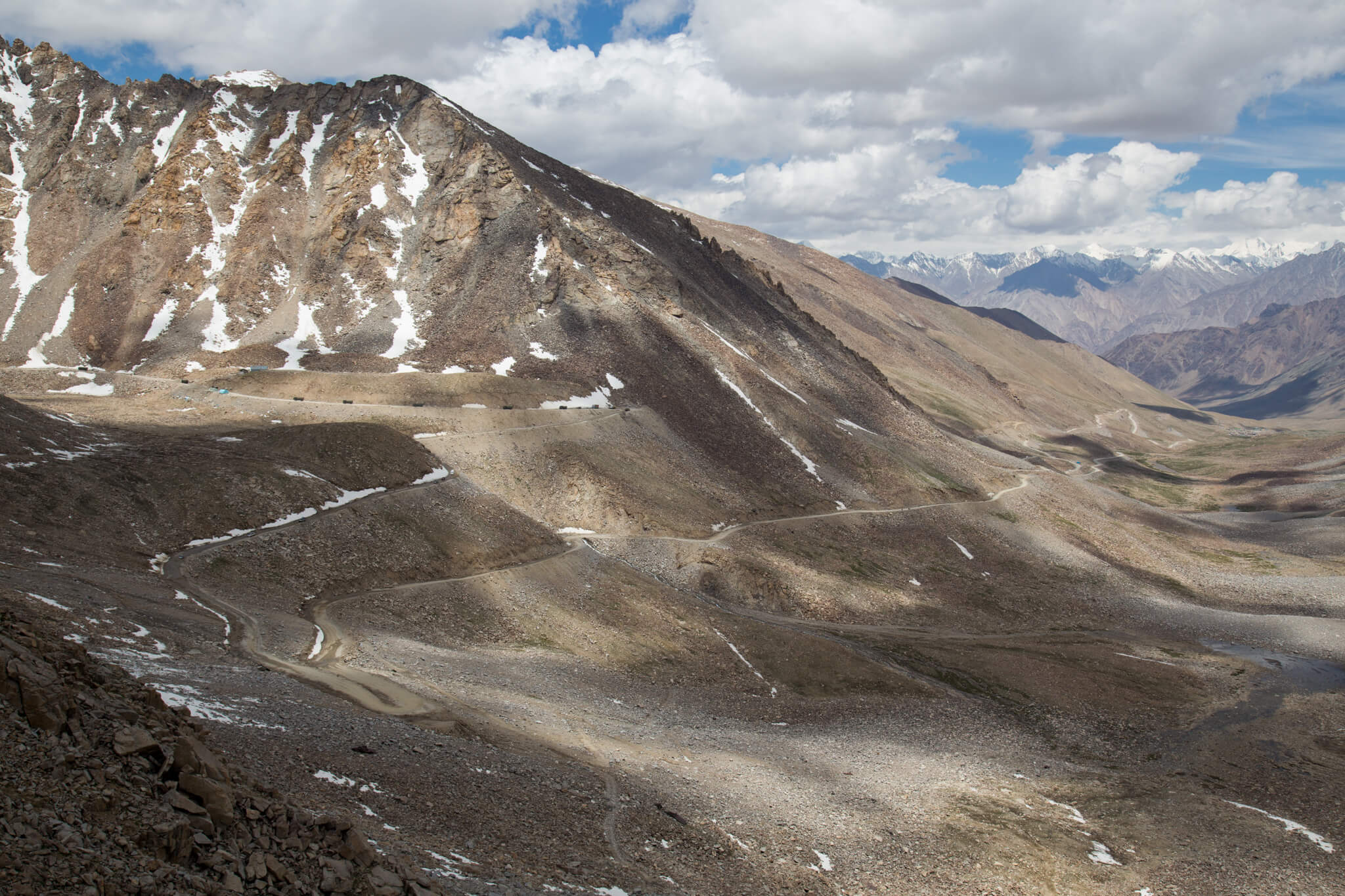
With the altitude difference and the track, the road is tiring, but the panoramas are magnificent.
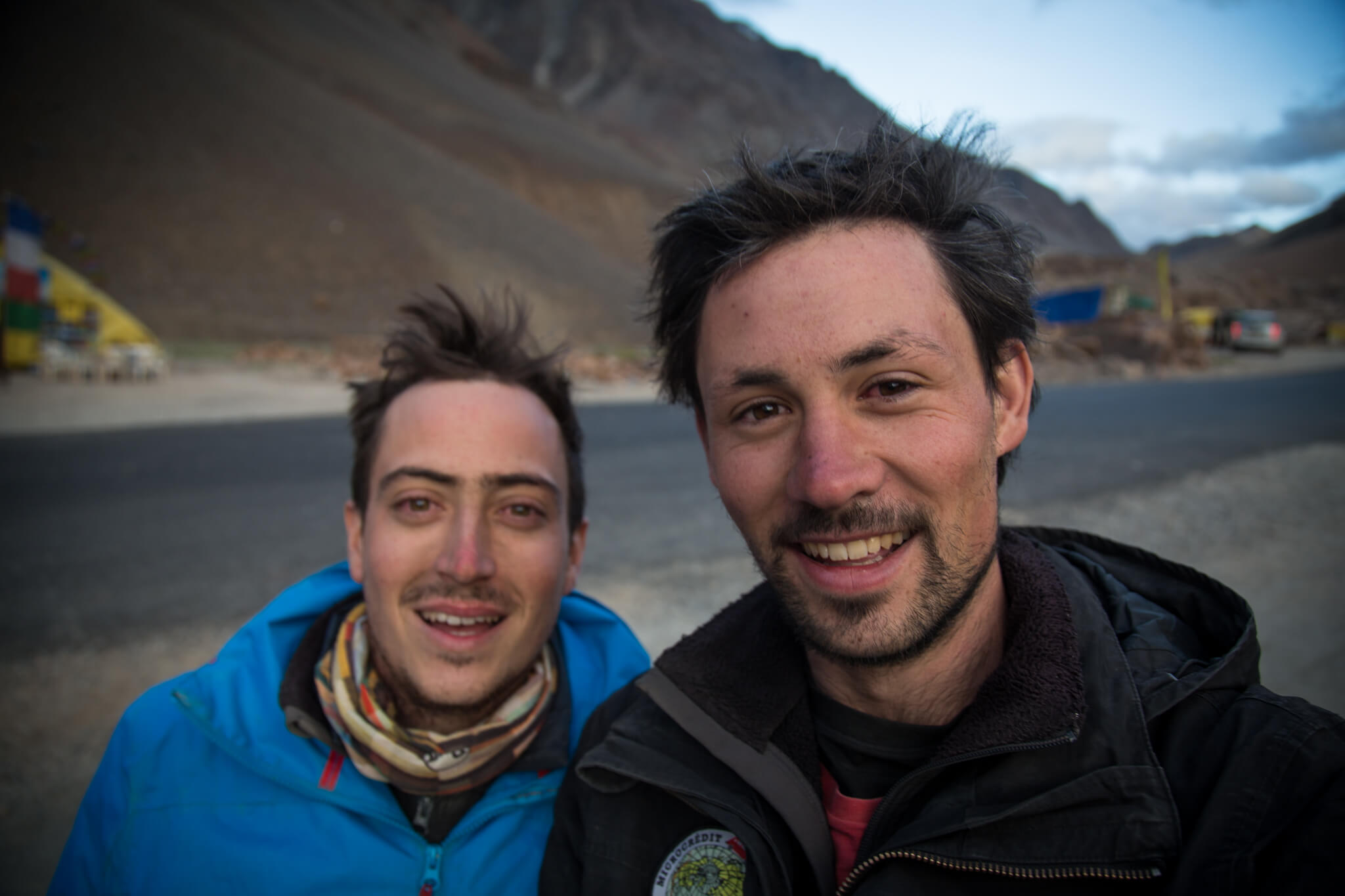
For the return journey, we chose to do two stages in one. After a day of 304 km and 10h spent on our bikes, we arrive like zombies in a tiny village at Zing Zing bar.
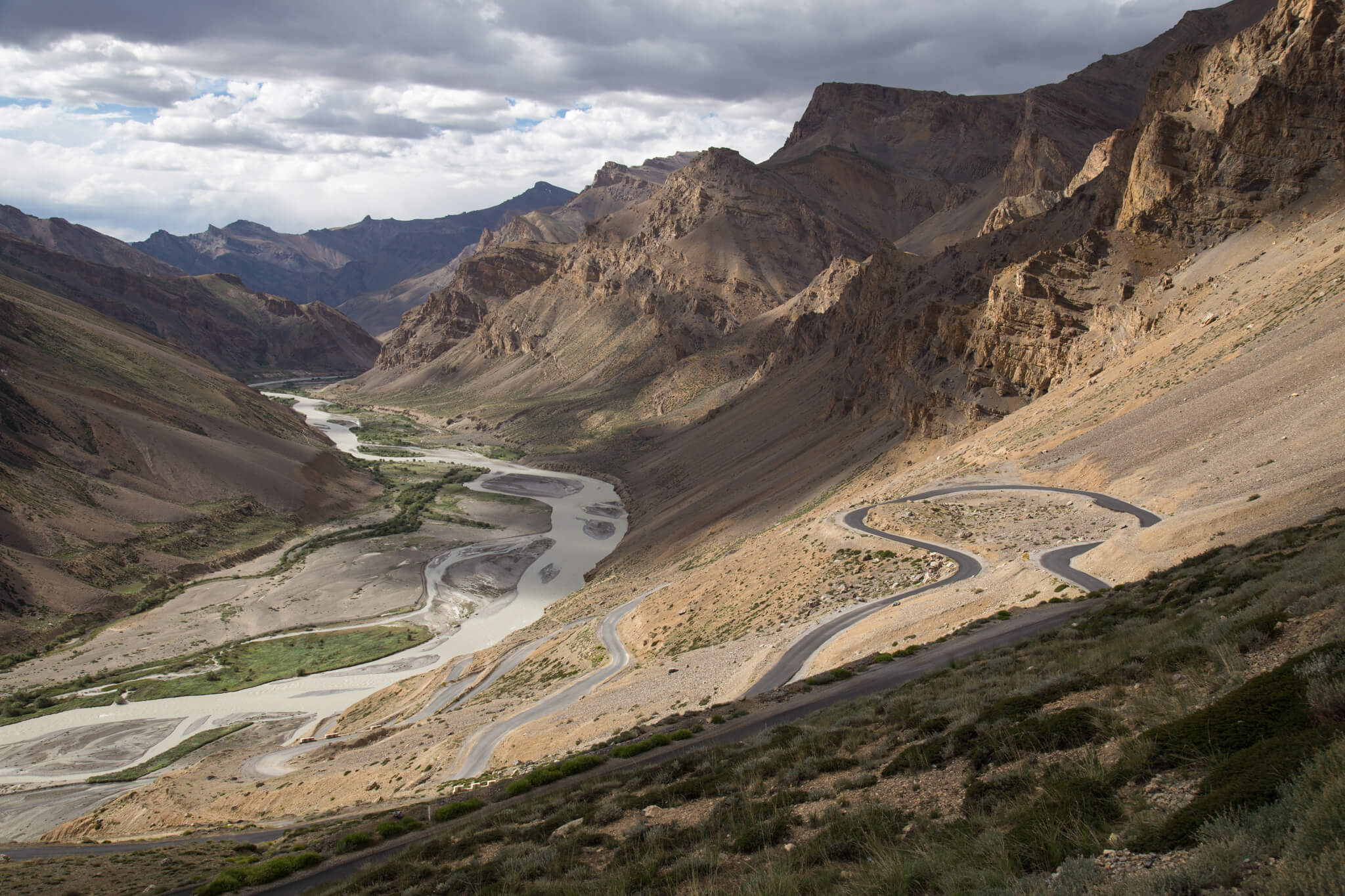
Almost vertical descent for 2 km.
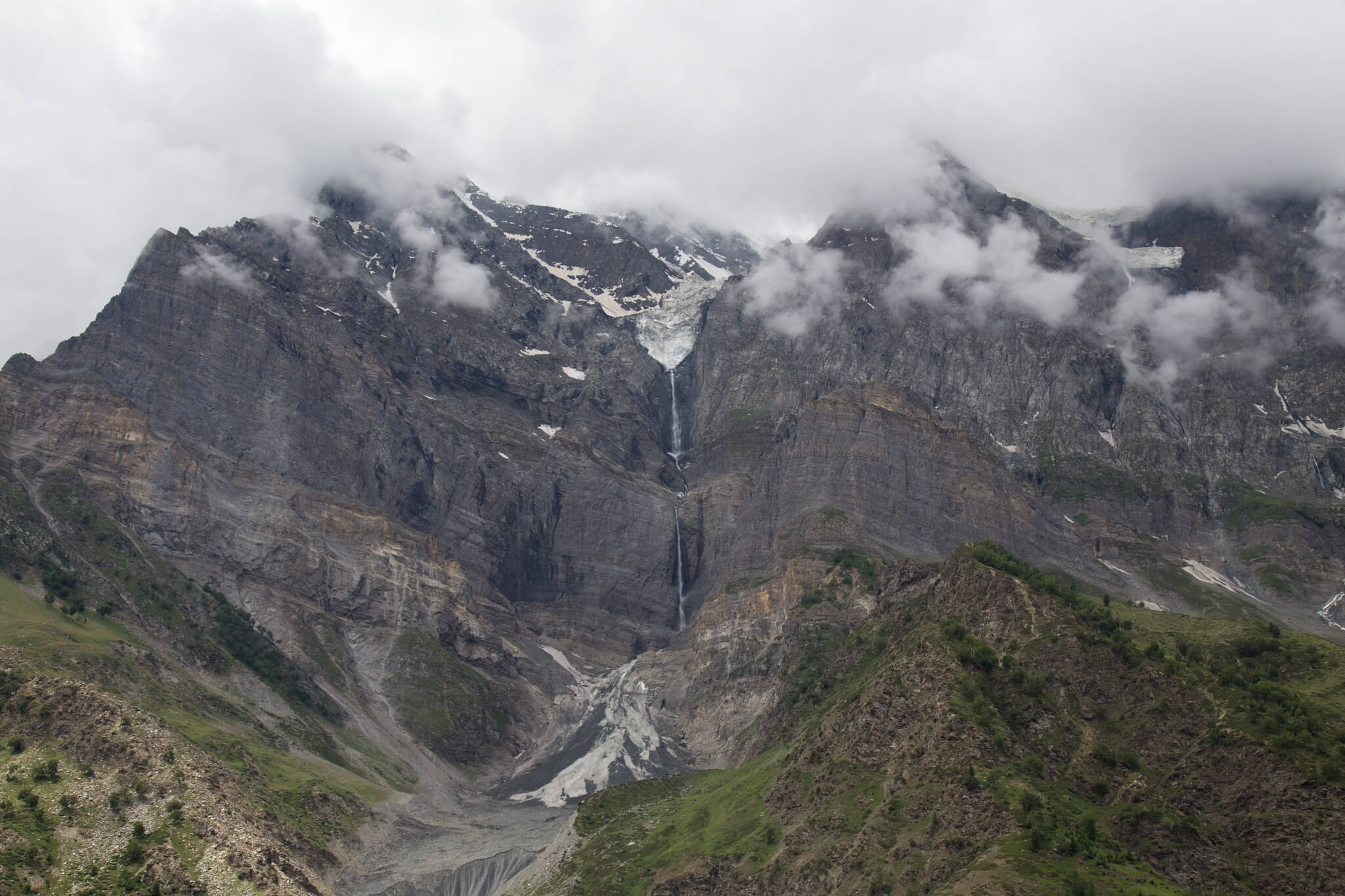
In summer, the glaciers melt and feed the rivers. High water often leads to flooding and landslides.
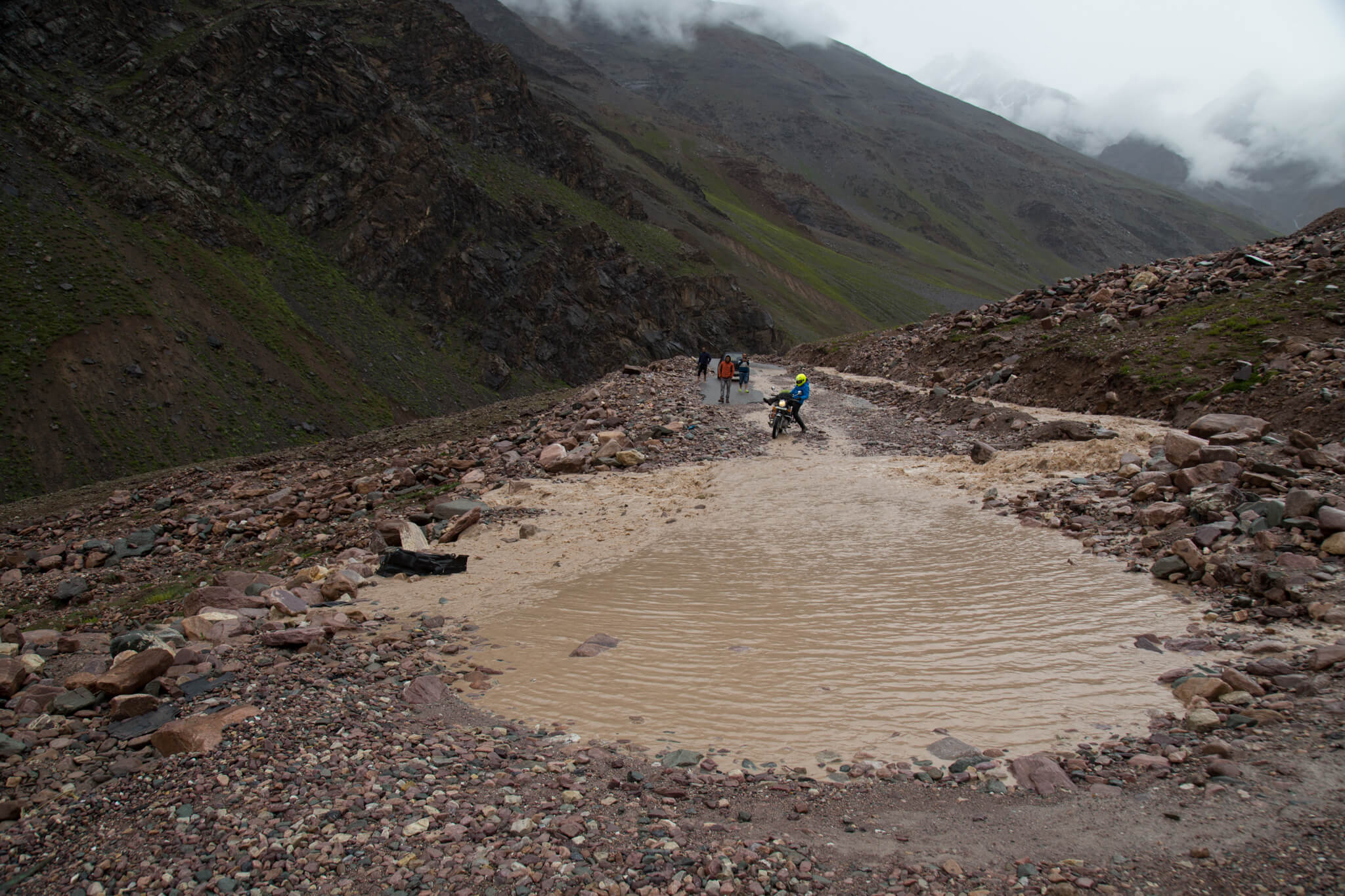
A new landslide has flooded the road. Before crossing, we always stop to assess the depth. To get over the obstacle, we have to drive at a steady pace and play with the handlebars because we can’t see the stones under the water. It’s not too difficult, but we inevitably get wet. It’s 7:30 in the morning when we tackle this ford.
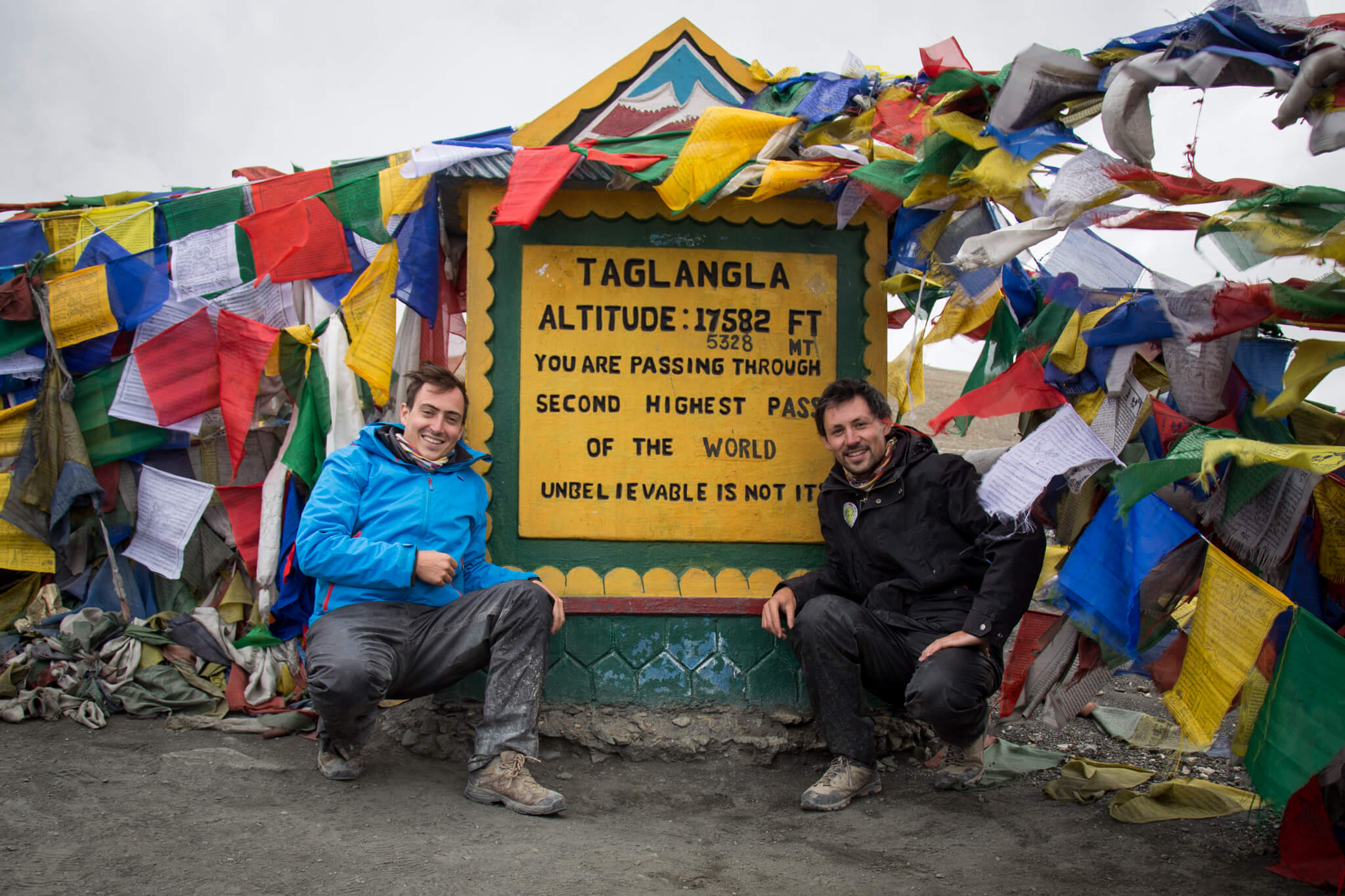
Taglang La, the world’s second-highest pass (5328 m). In ten days we covered 1200 km from Manali to Diskit via Leh and back.